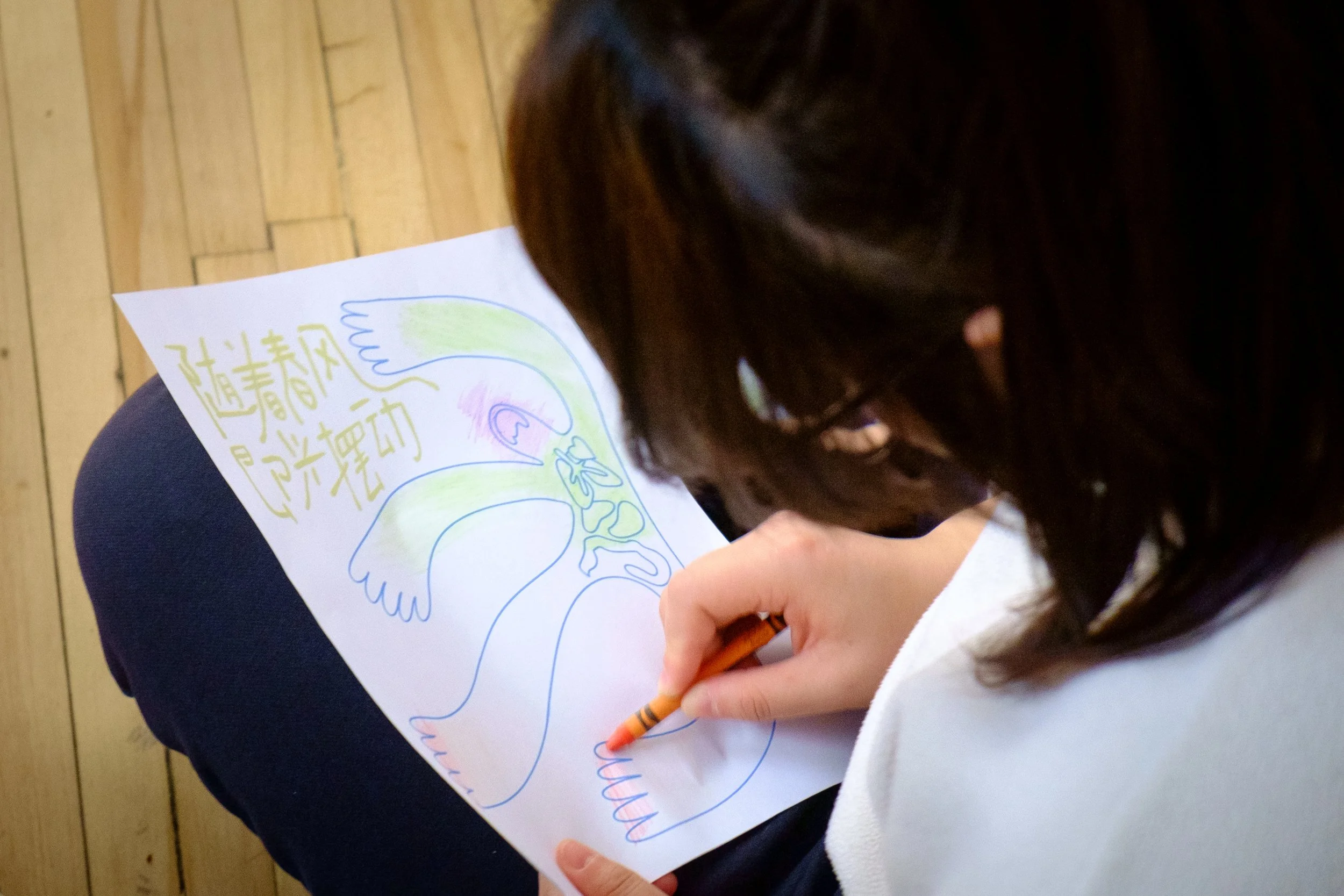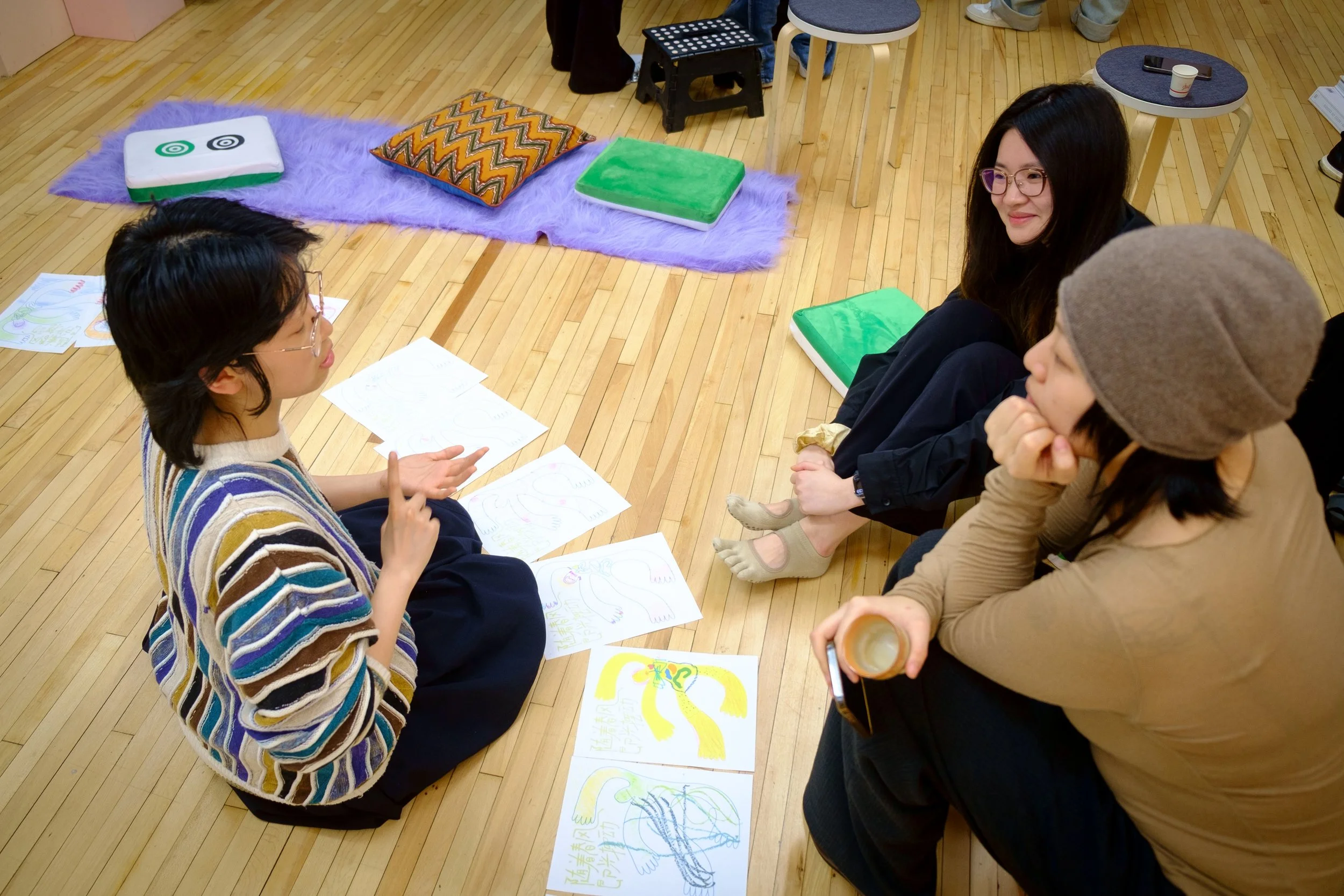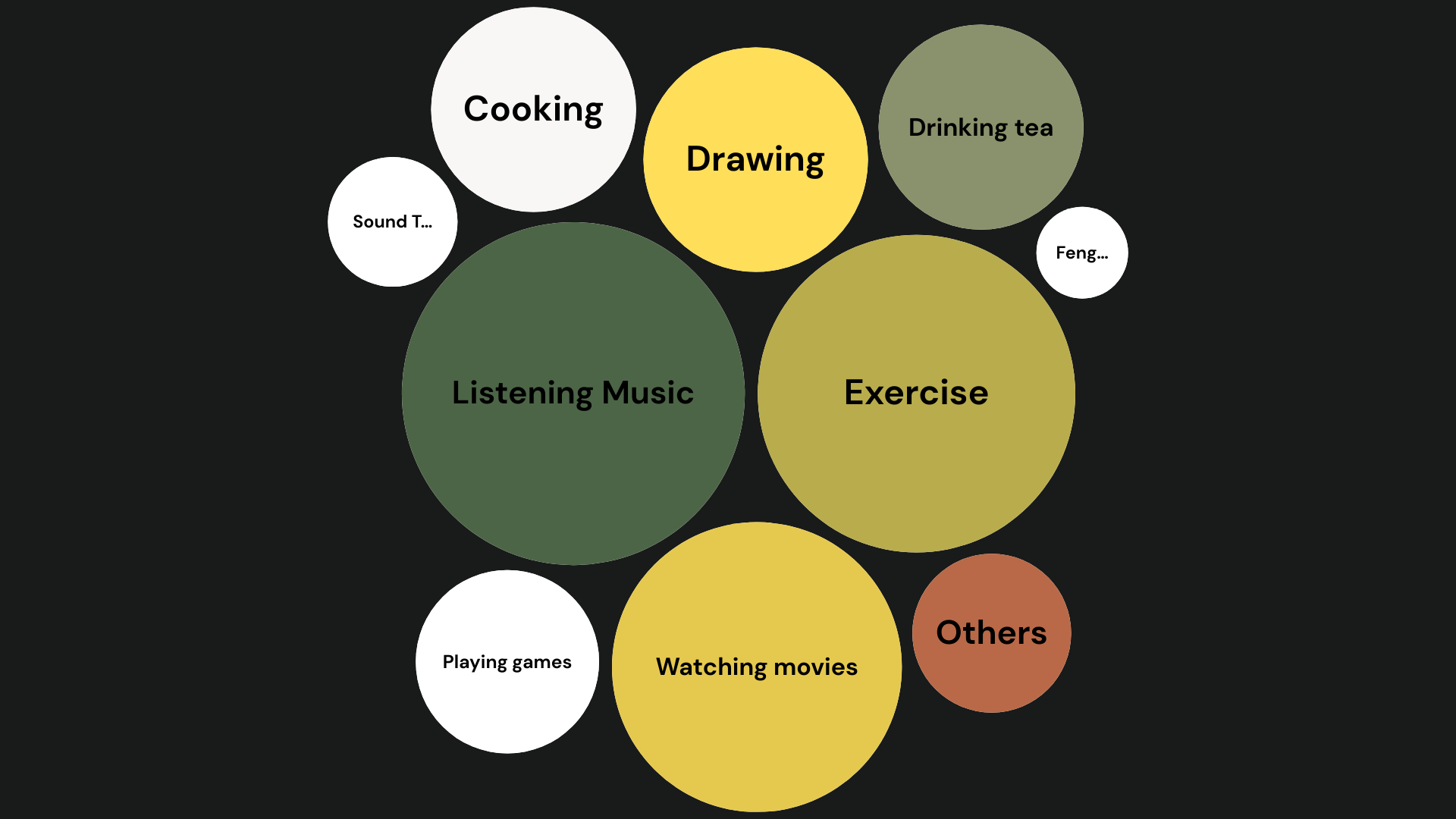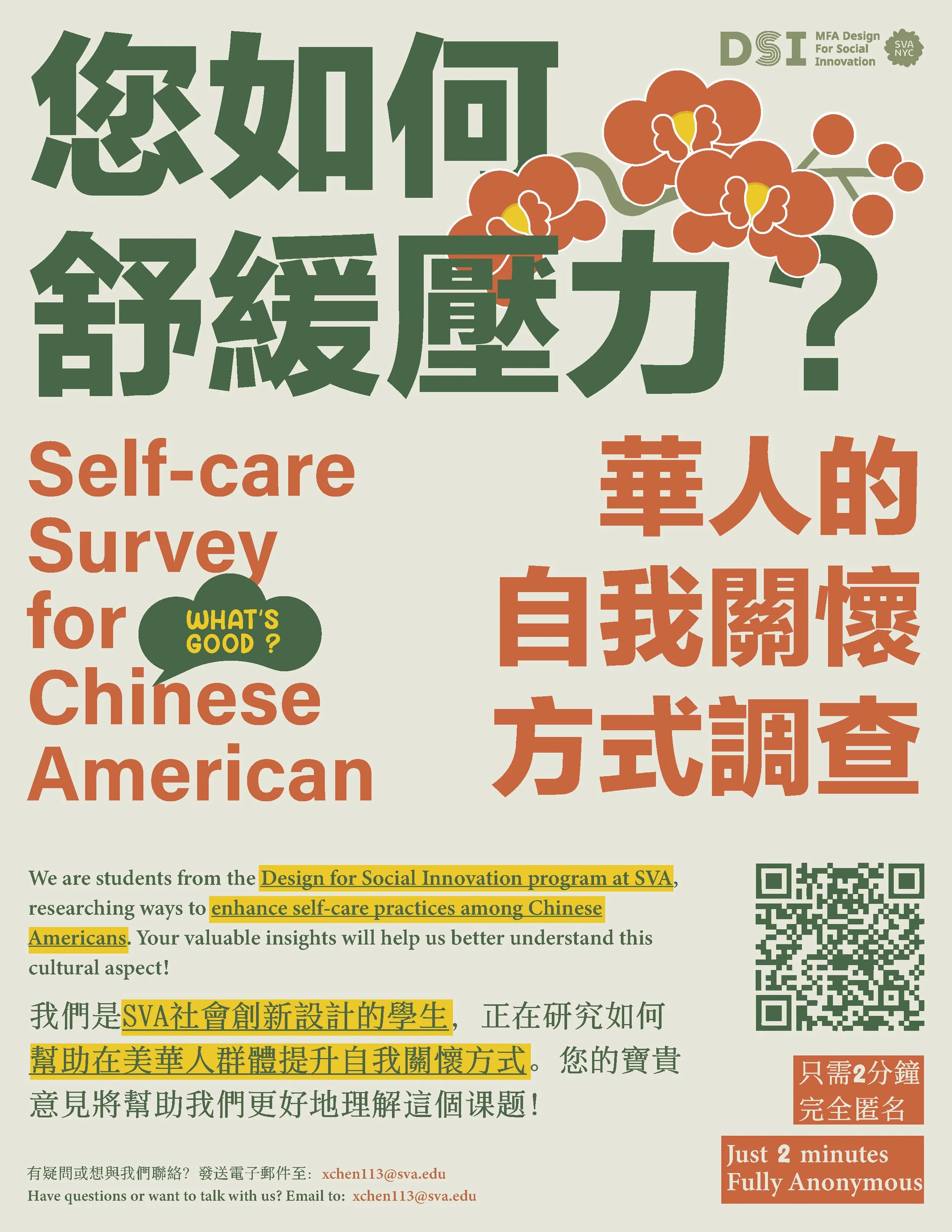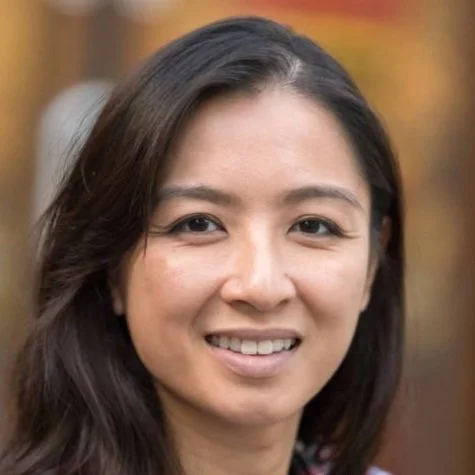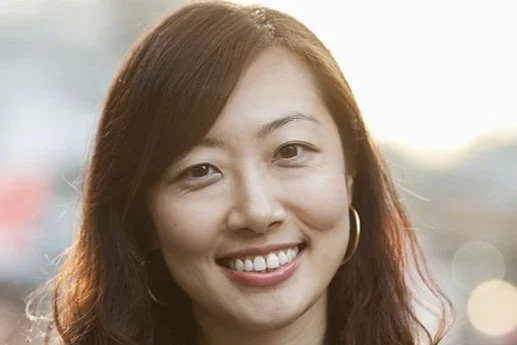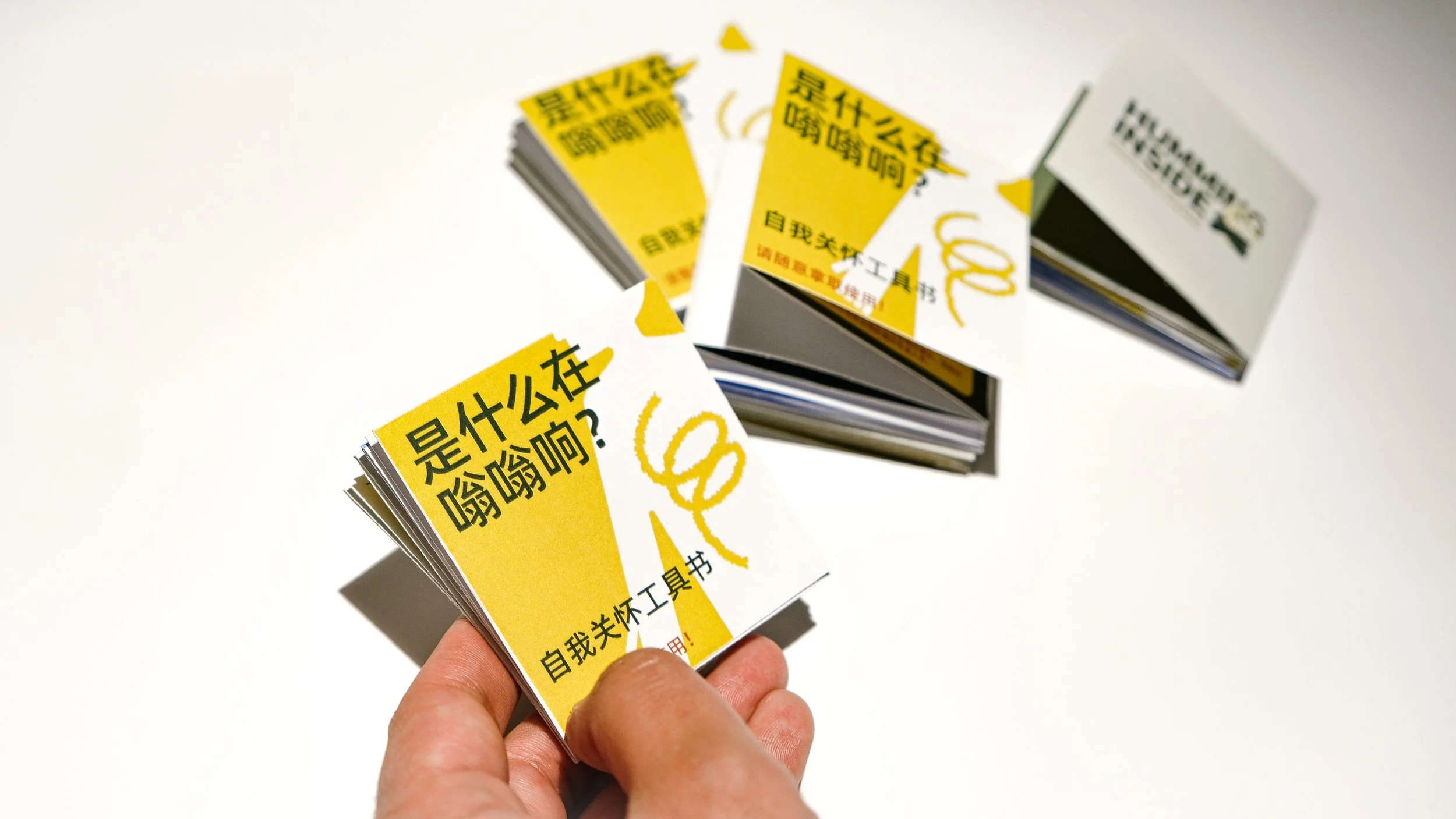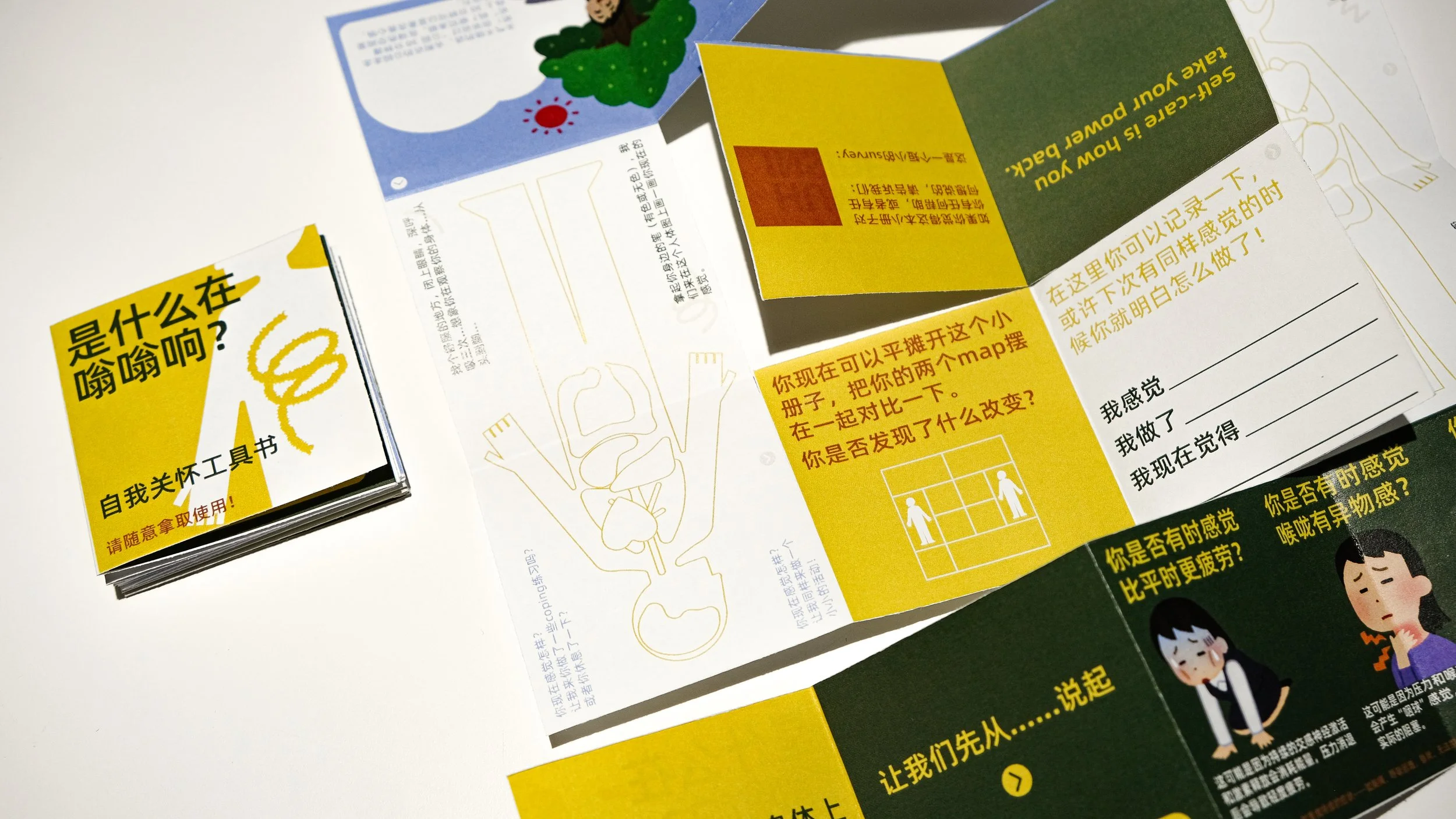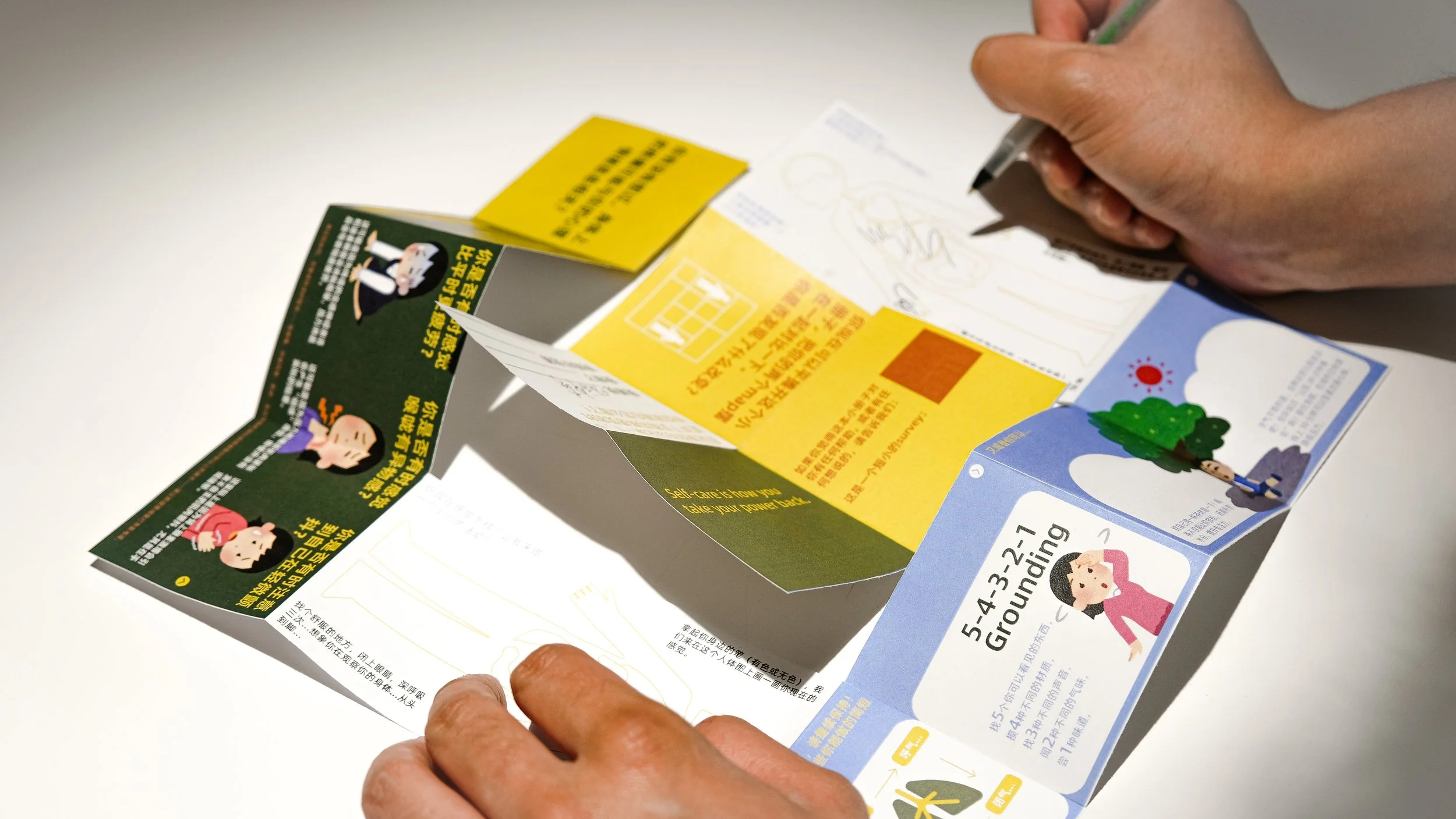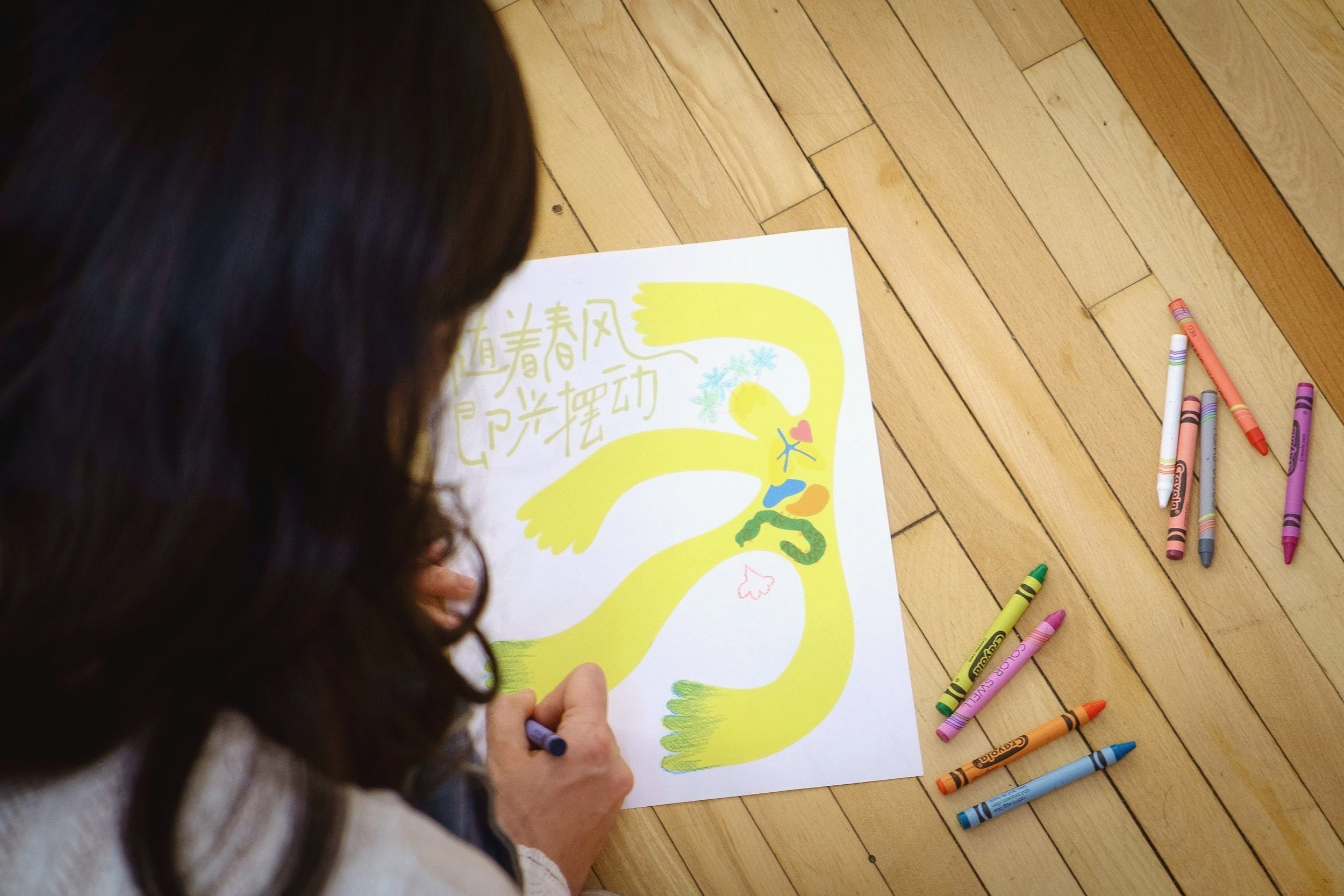
Humming Inside Us
Service Design Project for Mental Wellness in the Chinese Community
“How might we empower Chinese-American individuals in caring for their emotional well-being while honoring and preserving their collectivist cultural values?”
Context
Master's Thesis Project in Design for Social Innovation thesis project, where students are required to lead the entire project lifecycle, independently establishing partnerships with organizations, and evaluating interventions through testingRole
- User Experience Researcher
- Visual Design Strategist
- Design Storyteller
- Community Outreacher
- PrototyperTeam
- Mari Nakano (Thesis Advisor)
- Lona Vincent (Thesis Advisor)
- Aijia Yao (Clinical Psychology PhD)
- Zilu Wang (Music Therapist)
- Henry Street Settlement (Partner)
- Nany Chen (Thesis Partner)Tools
Figma, Adobe Illustrator, Photoshop, Procreate, Premiere Pro, Keynote, Qualtrics, Google workspace, R-studio, Notion, Pinterest, CanvaIntroduction
A Master’s Thesis for the MFA in Design for Social Innovation is a year-long design project where students identify a social problem, conduct qualitative and quantitative research, define the problem scope, prototype and co-create solutions with the community, and then develop and test a final intervention. Focusing on the mental wellness of Chinese Americans in New York City, my partner Nany and I embarked on creating an emotional tool designed to equip them with self-care coping strategies, which could be utilized in the cultural activity we developed.Background
Chinese Americans face significant challenges in addressing their mental health needs. Studies indicate that 16% of Chinese Americans experience symptoms of depression, and only 45% of Chinese American women rate their mental health as “excellent or very good” (Kim et al., 2015). Despite these concerns, Asian Americans, including Chinese Americans, are three times less likely to seek mental health services compared to White Americans (Alvarez & Shin, 2012).Cultural norms, such as emotional suppression and collectivist values prioritizing social harmony, often discourage open emotional expression. Language barriers and lack of educational resources further hinder access to support, leaving many without adequate mental health care. This emotional suppression can manifest physically—a phenomenon known as somatization. Approximately 15–20% of Chinese patients visiting general medical clinics report somatic symptoms without a clear medical cause, highlighting the prevalence of this issue (McGarity-Palmer et al., 2023).
Recognizing the need for culturally relevant approaches to mental health, Humming Inside Us was developed to bridge this gap. The project aims to provide young Chinese adults with tools that resonate with their cultural experiences, facilitating emotional awareness and well-being through familiar, non-verbal practices.Research
How do Chinese young adults perceive and understand mental wellness?What are the barriers that prevent young Chinese adults from maintaining their mental wellness?How does culture play a role in shaping young adults' willingness or ability to care for their emotional well-being?What kinds of approaches feel safe and engaging for young Chinese adults to explore their emotional well-being?What culturally rooted, non-verbal self-care practices do young Chinese adults currently use and prefer?
Research Questions
Led 2 workshops with 20 participants to explore the nature of existing stigmas and stereotypes and identify potential approaches for de-stigmatization.Conducted 39 semi-structured interviews with key stakeholders to uncover insights into systemic challenges and opportunities for improvement.Designed and conducted a survey with 100+ participants, investigating emotional challenges, barriers to accessing support, and preferences for culturally relevant activities. The collected data were analyzed using R-Studio to identify key patterns and insights.Facilitated 3 co-creation workshops with 52 participants in total, utilizing a cultural relevant tool to encourage storytelling and foster collaboration, resulting in user-centered and innovative solutions.
Methodologies
First-generation Chinese young adults, both male and female, aged 21 to 34, with high to low socioeconomic status, residing in New York CityParticipants Demographic
Workshop
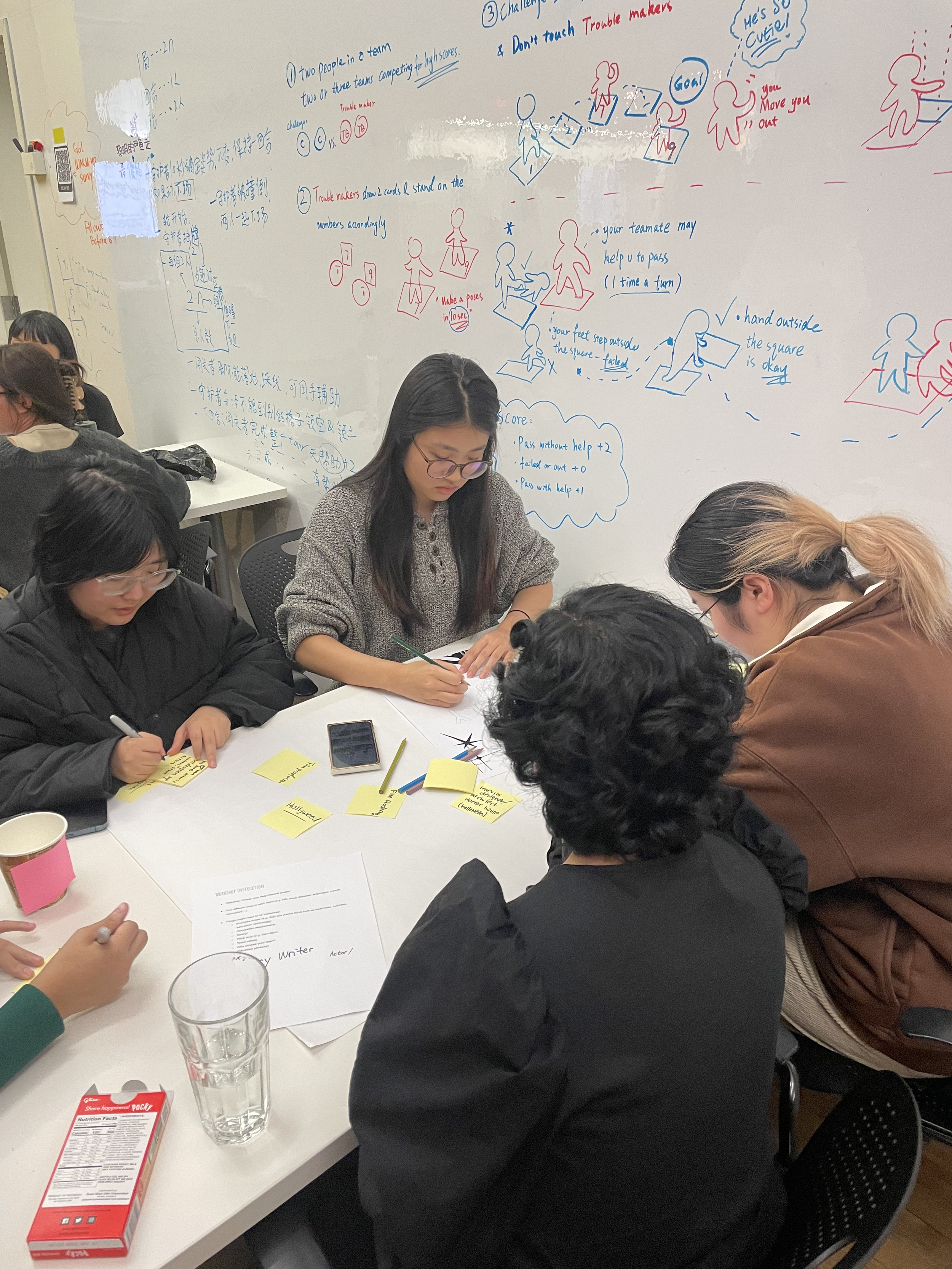
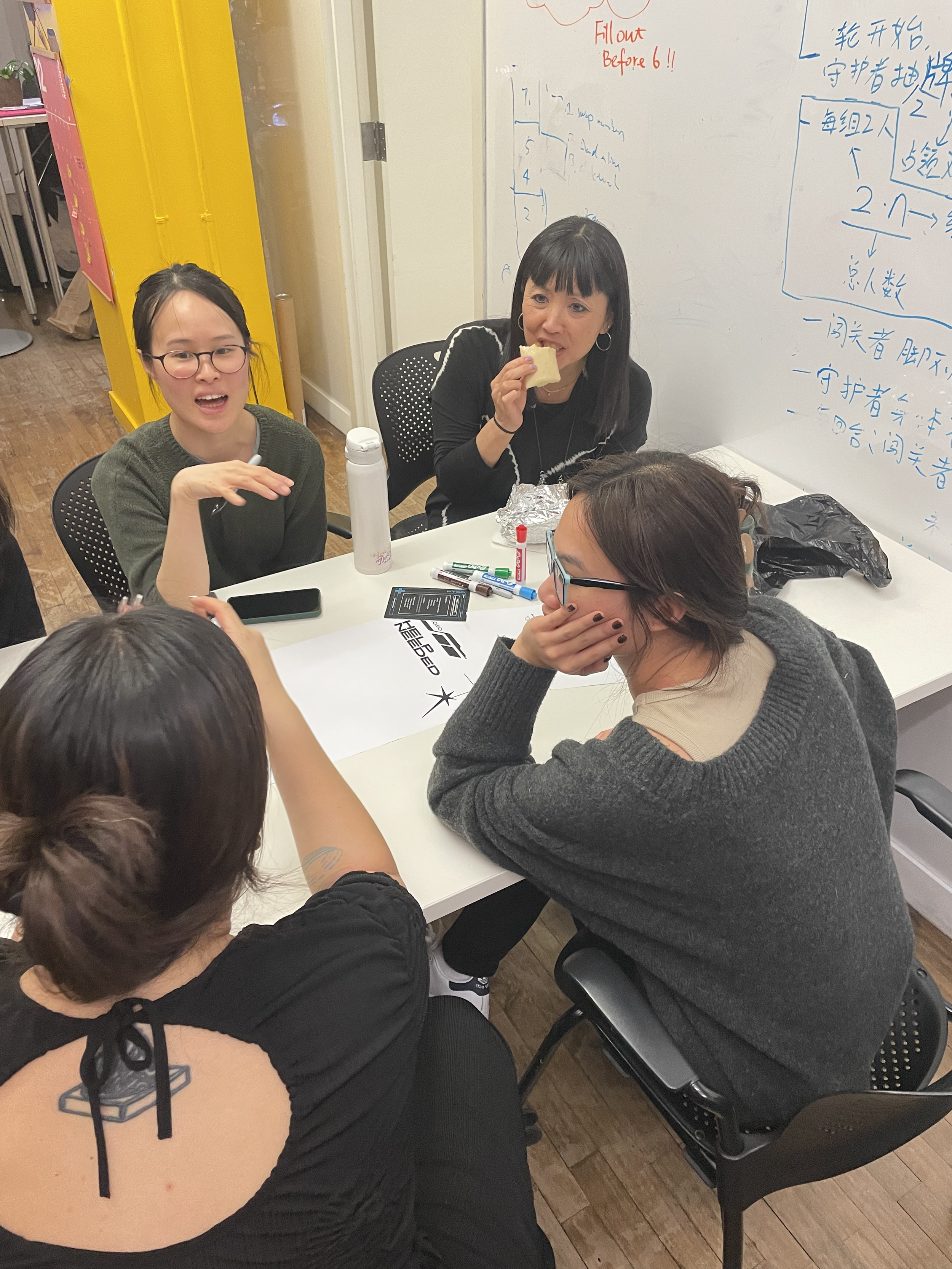
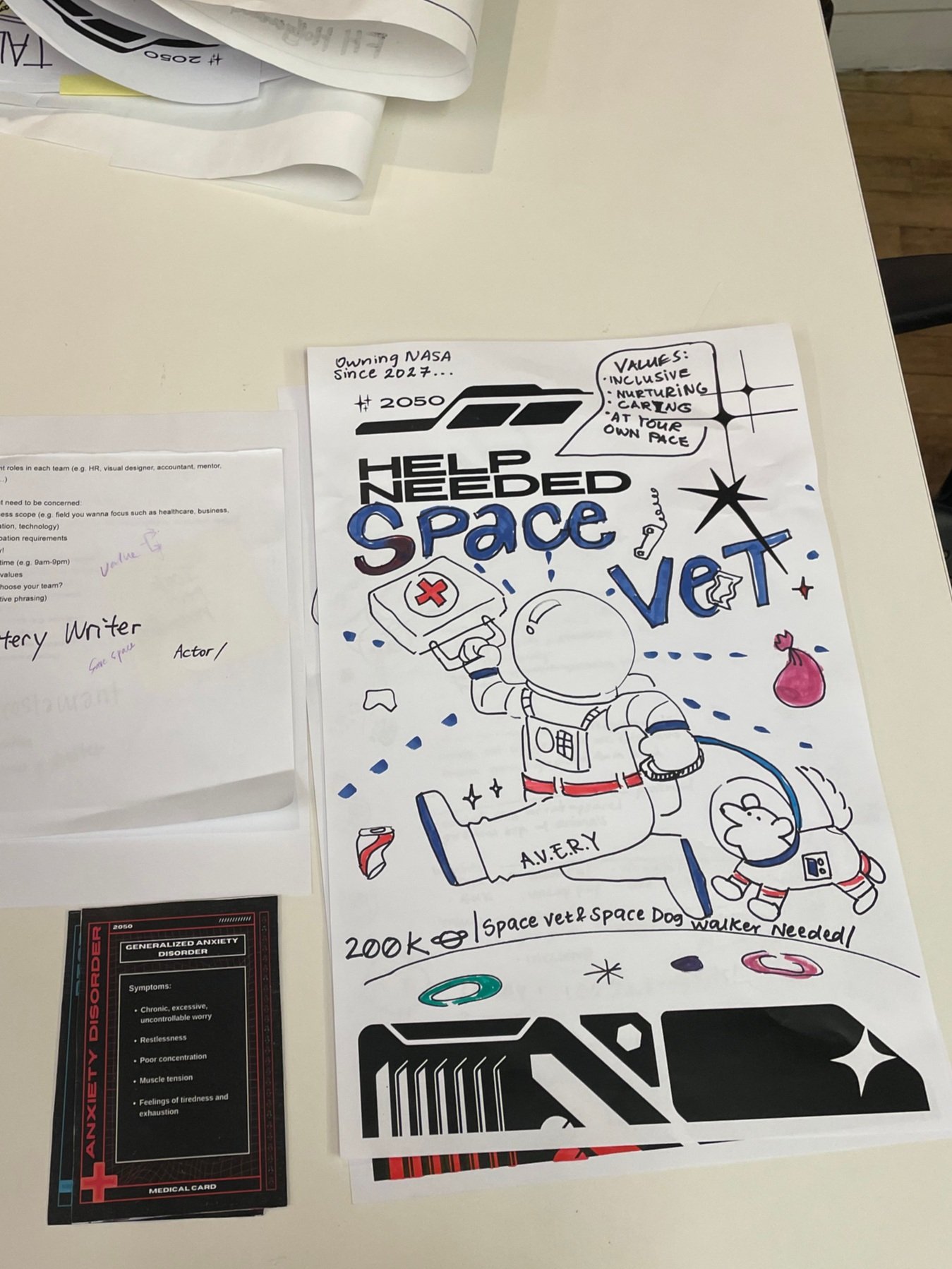
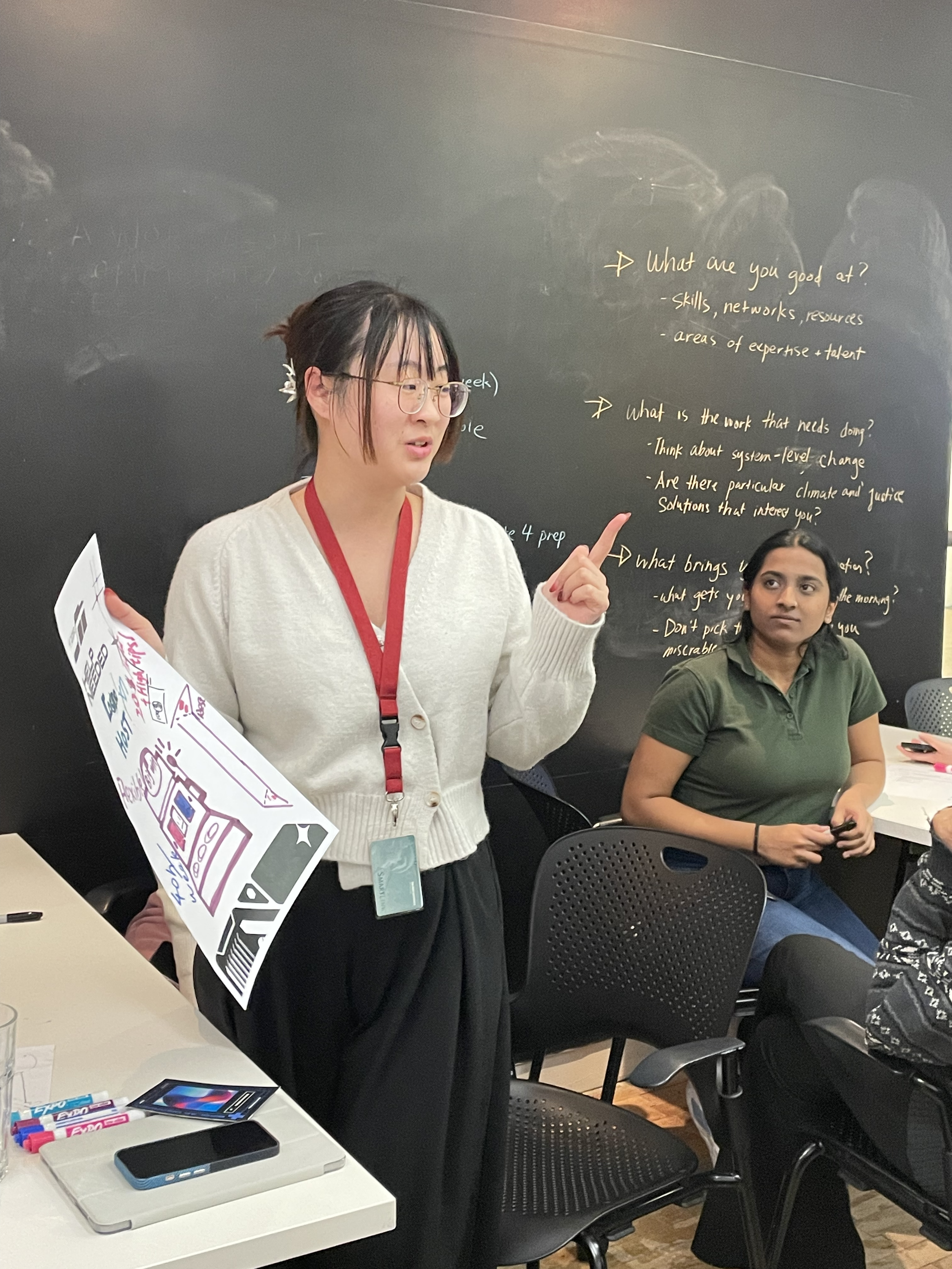
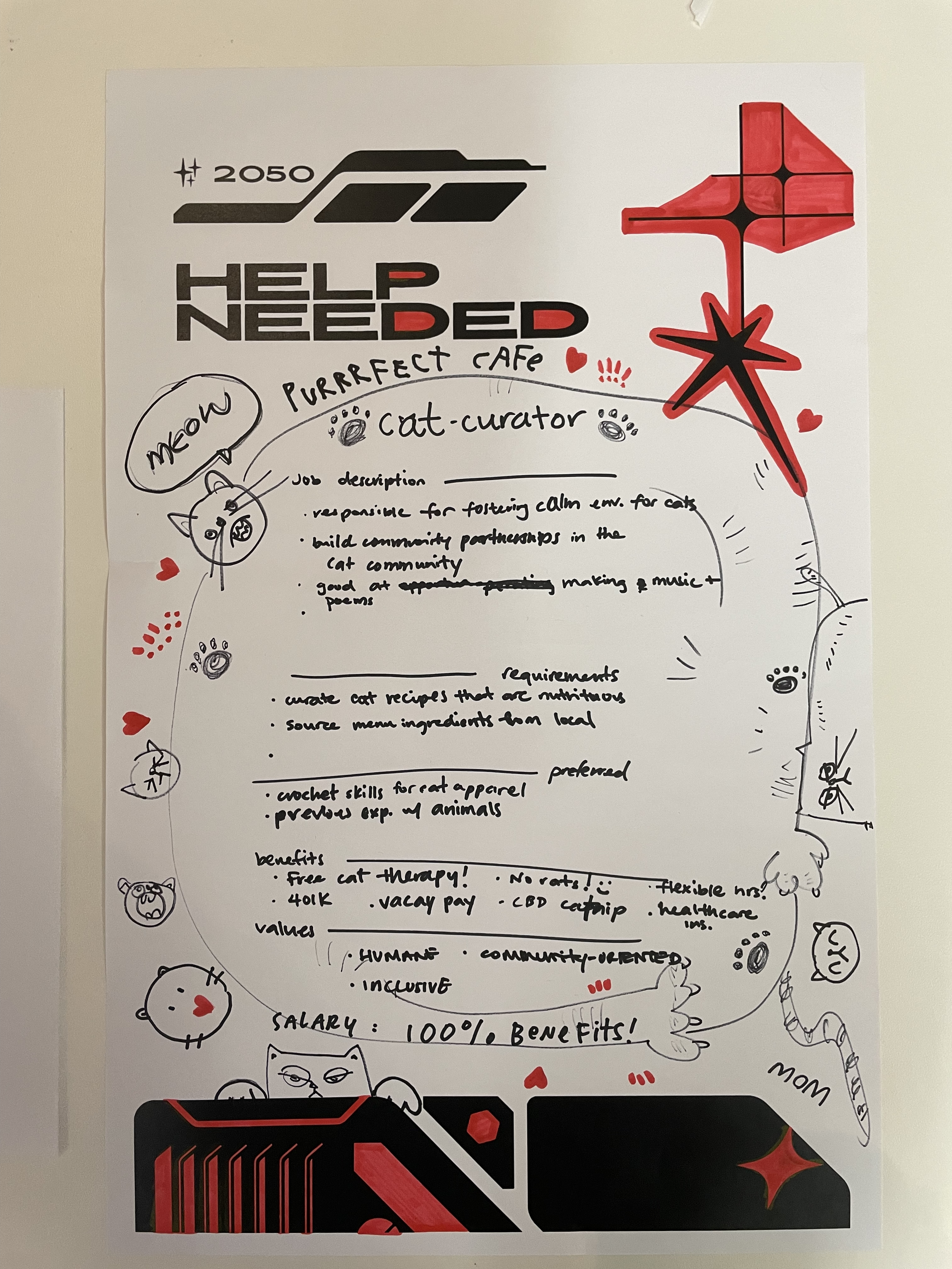
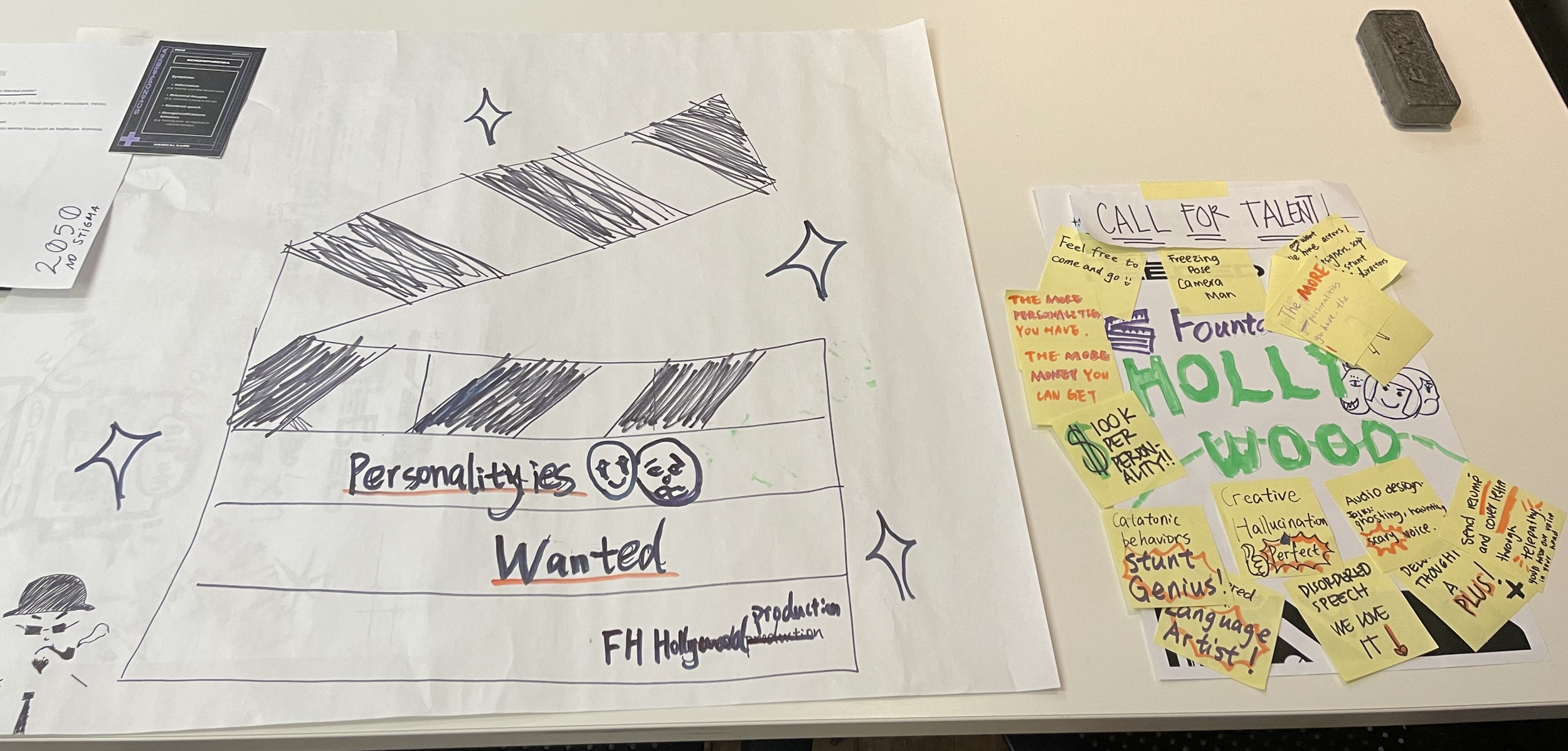
Survey Design
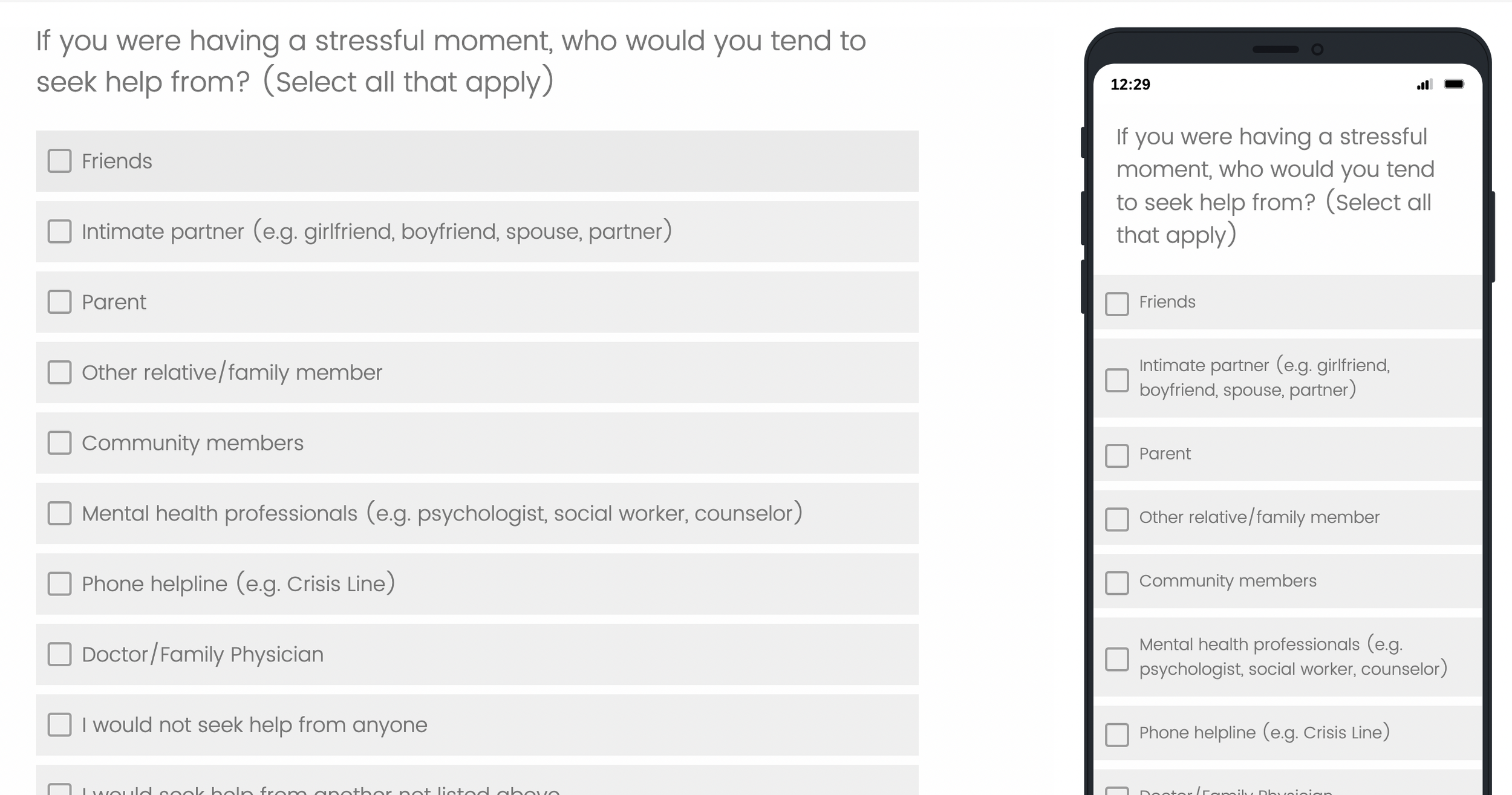
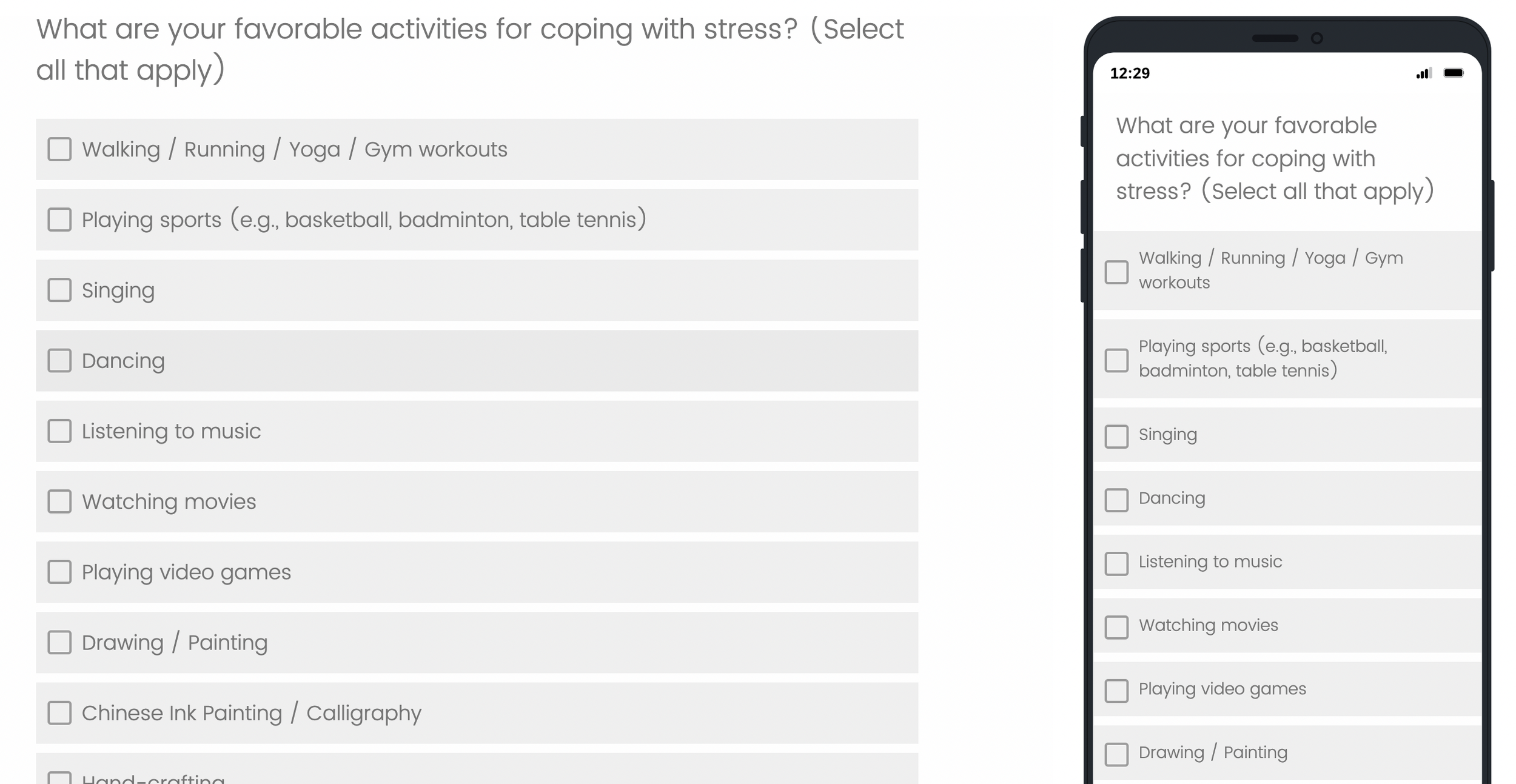
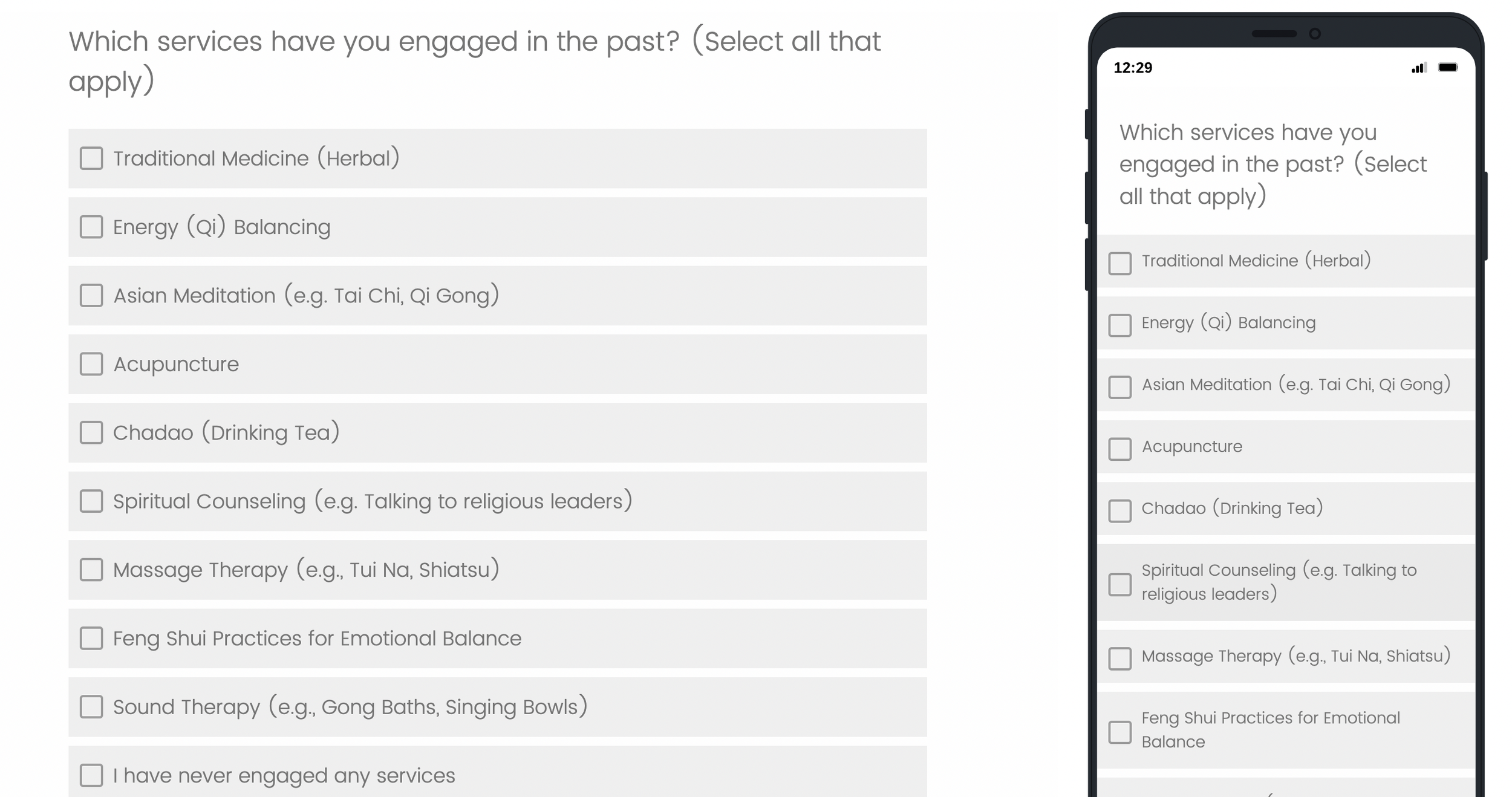
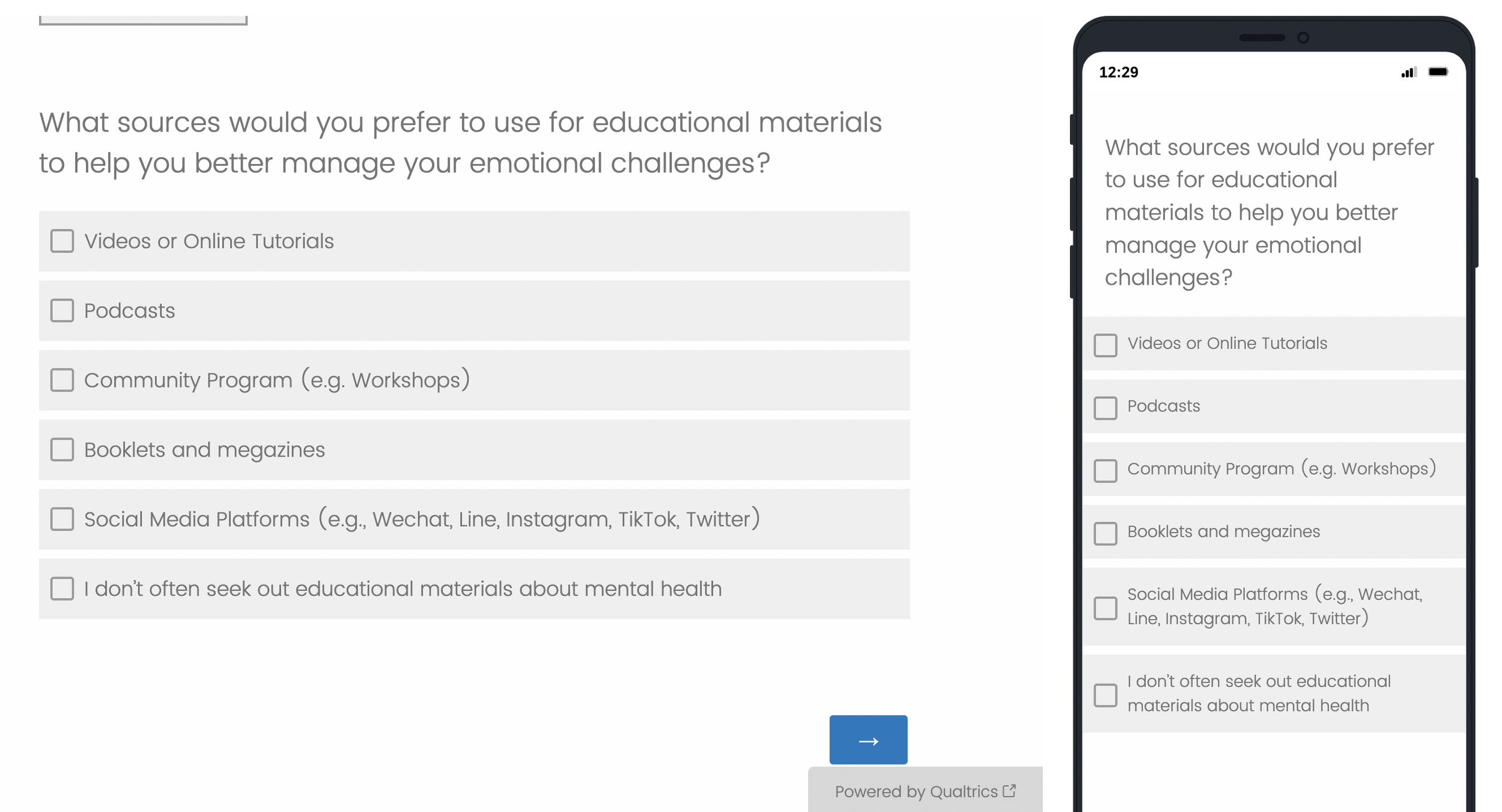
“For me, being mentally well isn’t just about feeling good on my own. It’s about knowing my whole family is happy and getting along. When everyone is doing well together, that’s when I feel at peace. I guess it’s just how I grew up, putting the family first over myself.”
- Miss. Qin
“I wish I could openly say how I feel without worrying about being judged. Sometimes, I want to cry or talk about my frustrations, but I feel like I should just smile and say everything’s fine because that’s what’s expected.”
- Mrs. Zheng
"When I feel stressed, I like to sit quietly and make tea the traditional way. The process of brewing it, the aroma, and the warmth all help me slow down and reflect. It’s a simple ritual, but it brings me peace and reminds me of home."
- Mr. Liu
Insights
• Cultural Barriers: Cultural norms discourage emotional expression and view it as weakness.• Accessibility Challenges: Limited access to culturally and linguistically relevant mental health services.• Somatization: Emotional stress often manifests as physical symptoms (somatization), complicating recognition.• Feelings of Insecurity: Lack of safe spaces to practice emotional expression.User Needs
• Culturally-Relevant Resources: Culturally tailored tools and resources that align with collectivist values.• Safe Space: Safe, judgment-free spaces to develop and practice emotional expression.• Non-Verbal Self-Expression Tools: Preferences for non-verbal methods, such as art or music, to process emotions.• Low-Barrier Services: Accessible, affordable, and discreet mental health servicesPain Points
Prototype: Mind-Body Map
Our research highlighted a common theme: many young Chinese adults suppress their emotions, leading to a disconnection from their internal states and making it challenging to recognize when or how to engage in self-care.We drew inspiration from Traditional Chinese Medicine (TCM), which views the body not as a collection of isolated parts, but as an interconnected ecosystem. In this holistic framework, any imbalance in one area affects the entire system, emphasizing the importance of harmony between physical and emotional health (Beinfield and Korngold, 1995).
This perspective informed our first prototype: the Mind-Body Map reflection tool. Designed to help users gently tune into their bodily sensations, it encourages self-awareness and emotional recognition in a culturally resonant way.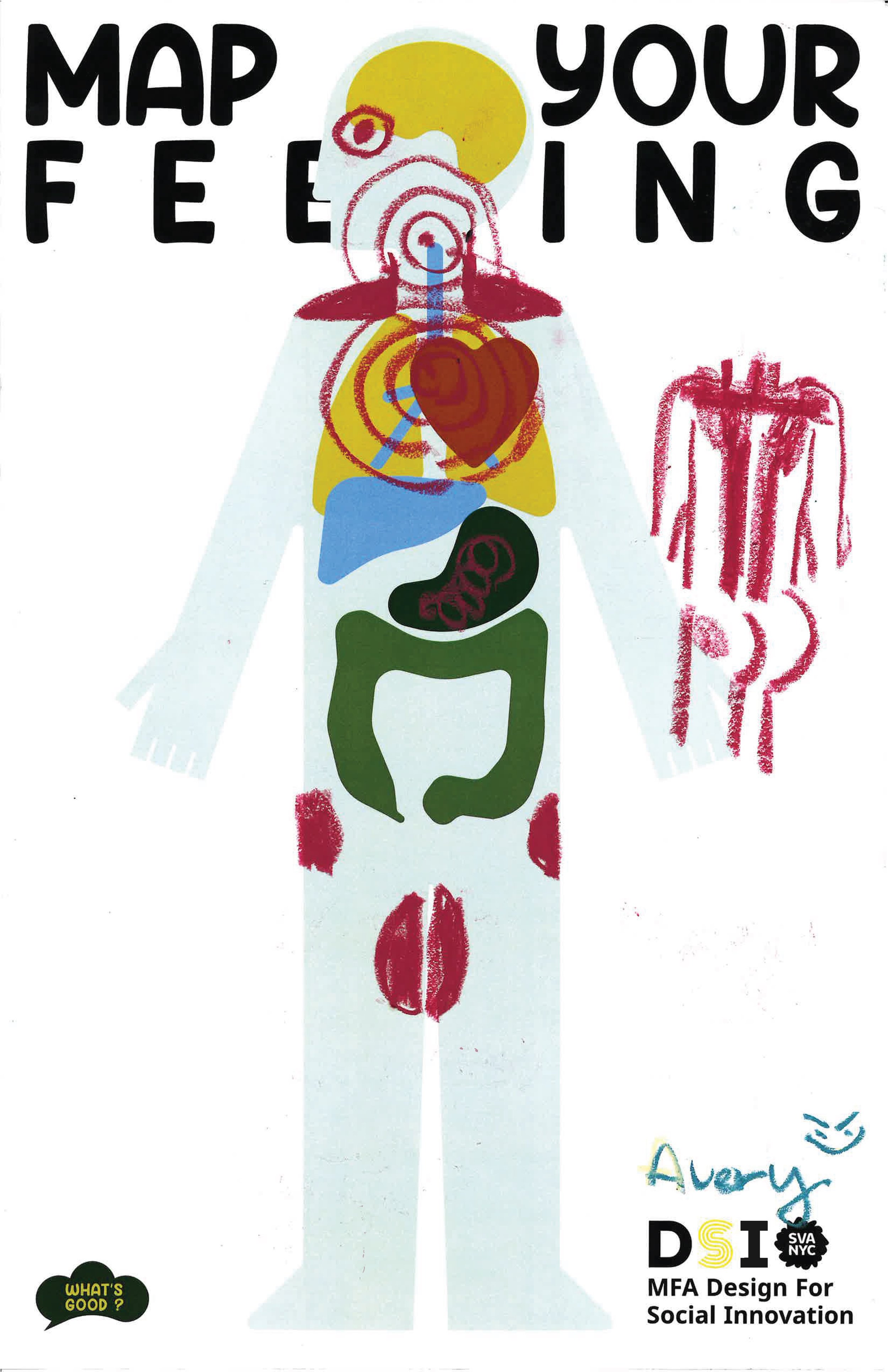
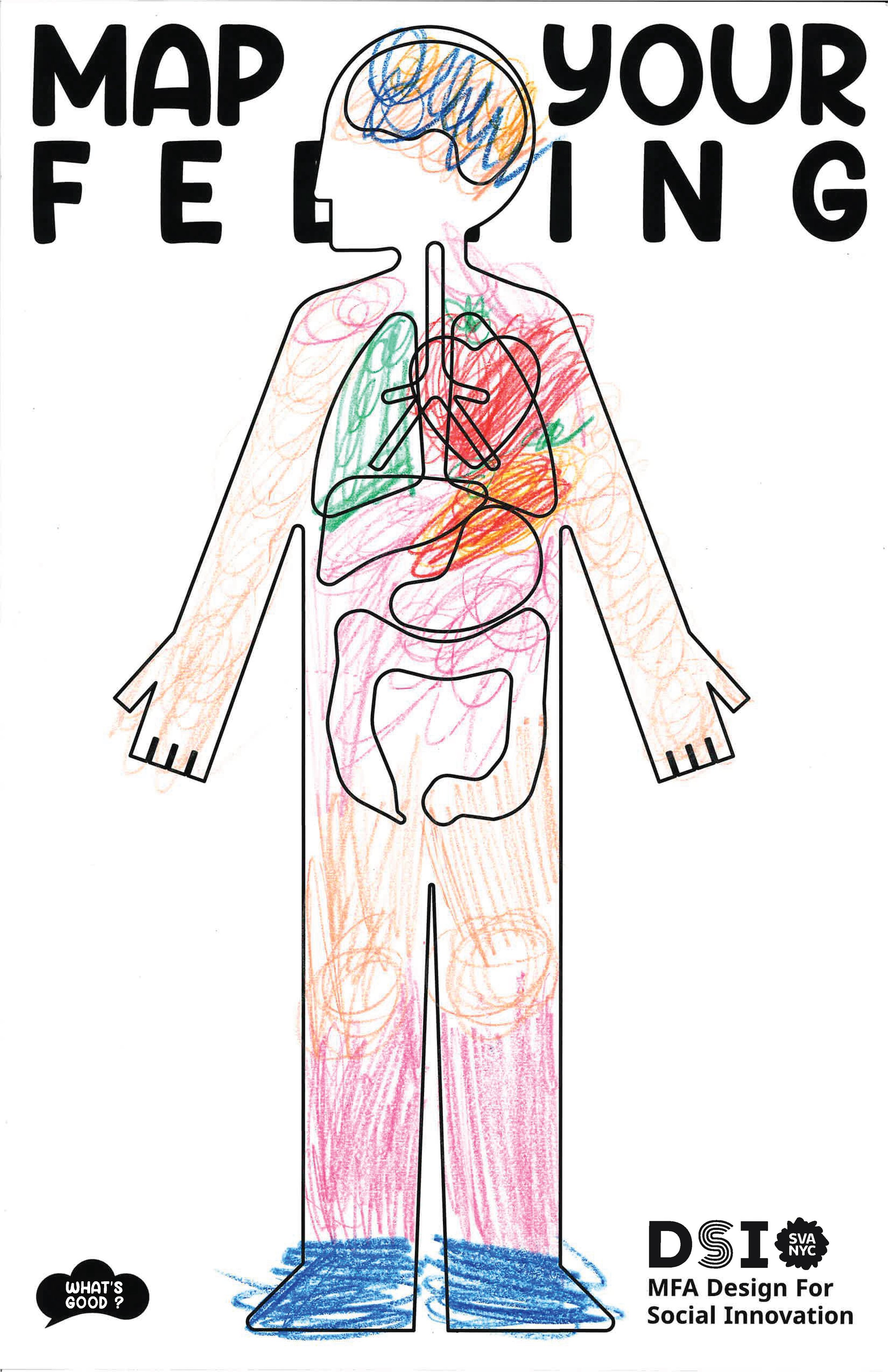
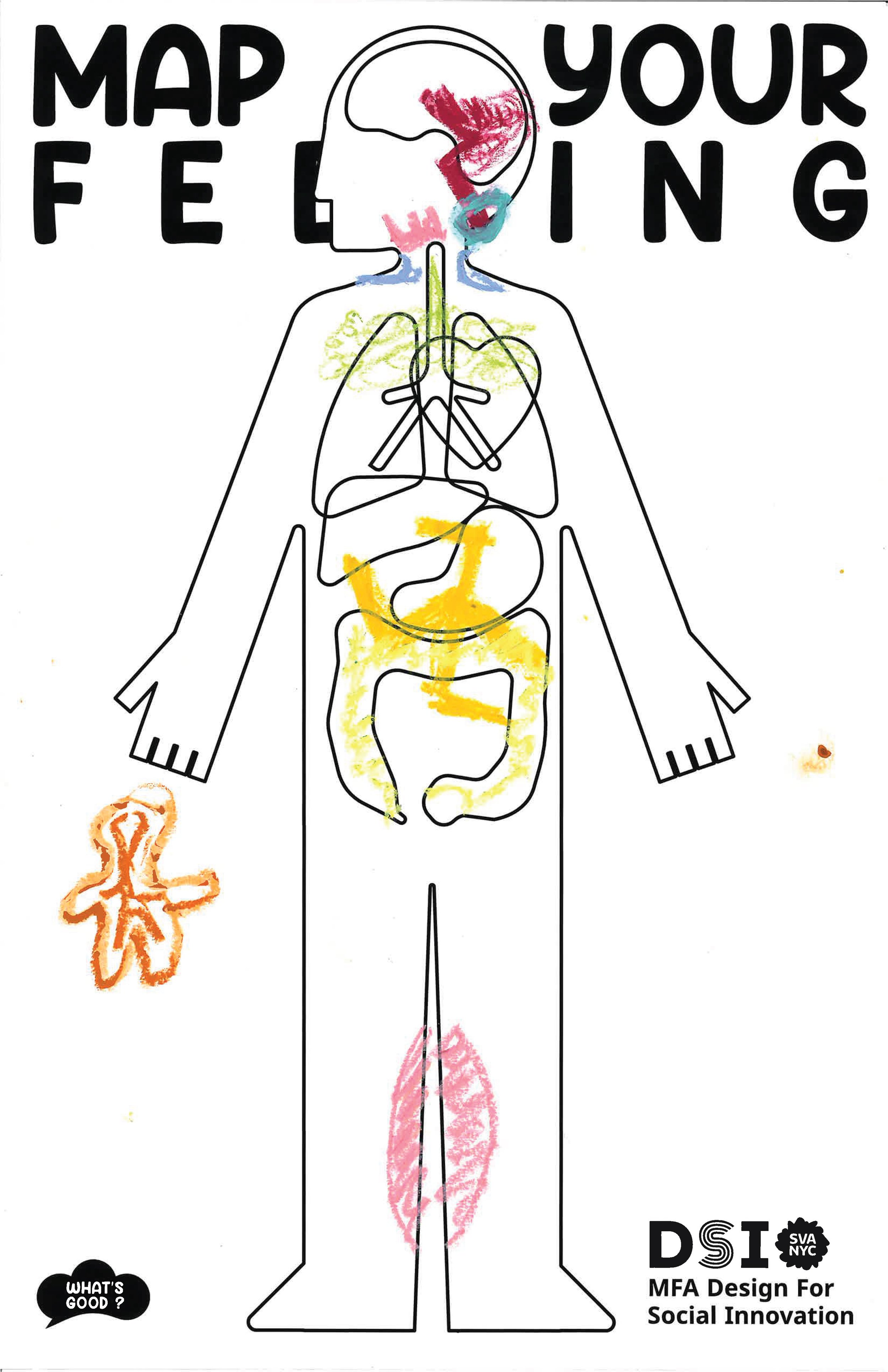
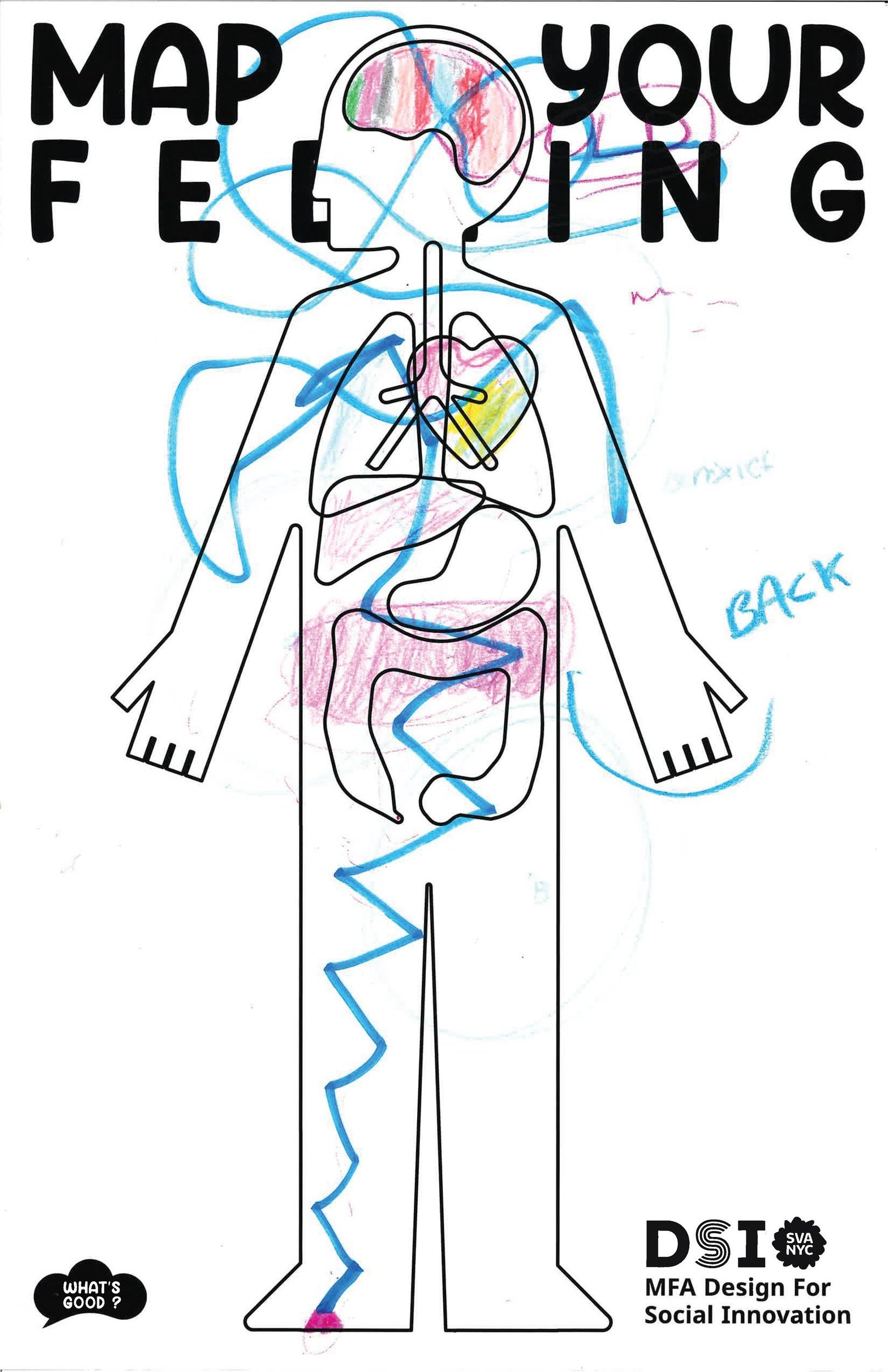
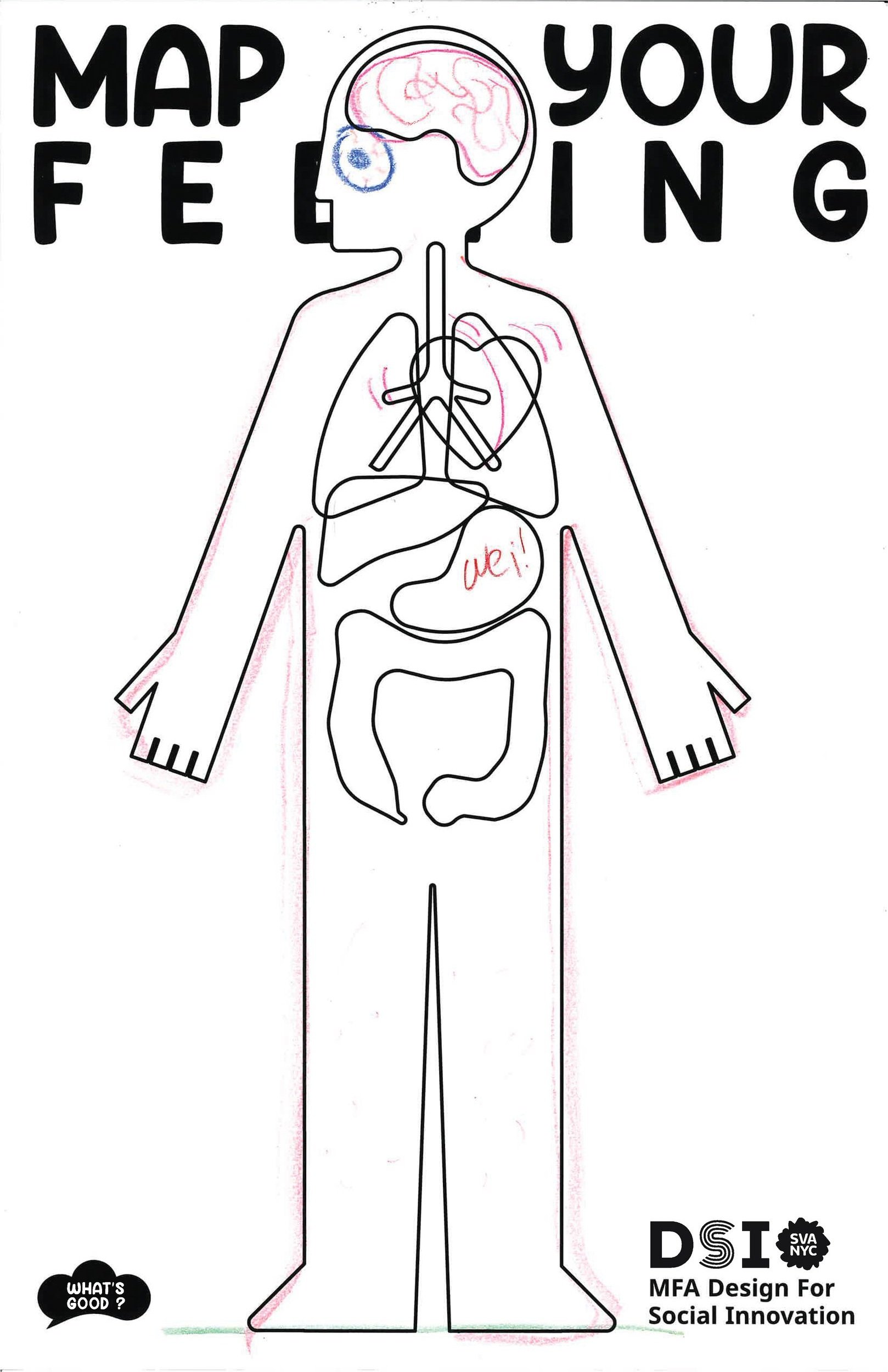
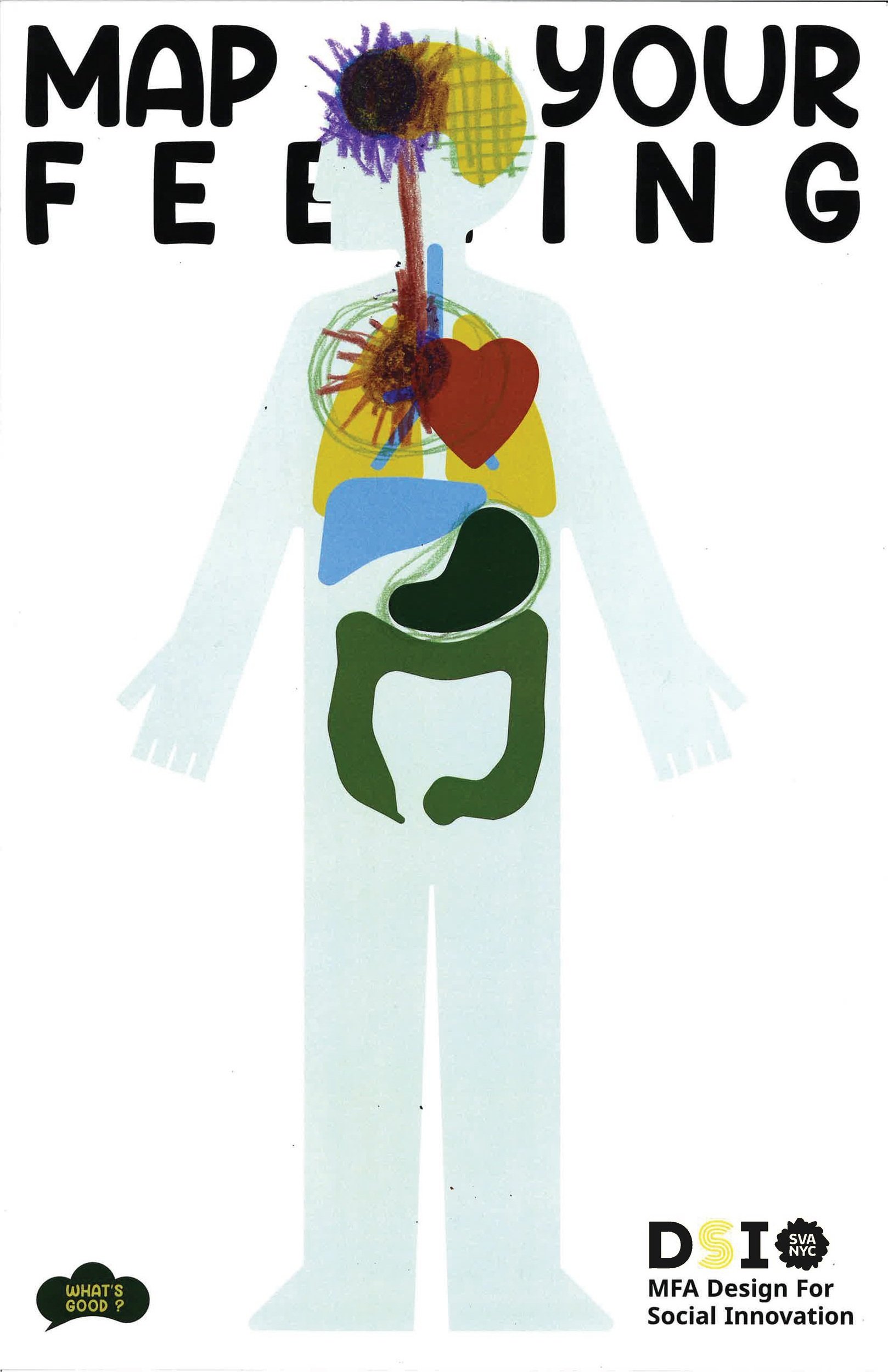

Intervention #1: Co-Creation Workshop
Building on feedback from our prototype testing and research, we've refined our final intervention to support both individual self-awareness and community engagement through culturally relevant practices. This involves co-creation workshops that integrate the Mind-Body Map with culturally resonant self-care activities, co-facilitated with professional service providers at partner sites.These workshops serve as collaborative spaces where participants can explore and embrace culturally aligned methods for emotional well-being. Feedback from these sessions will inform ongoing refinements to the Mind-Body Map and workshop content, ensuring they remain responsive to participants' needs.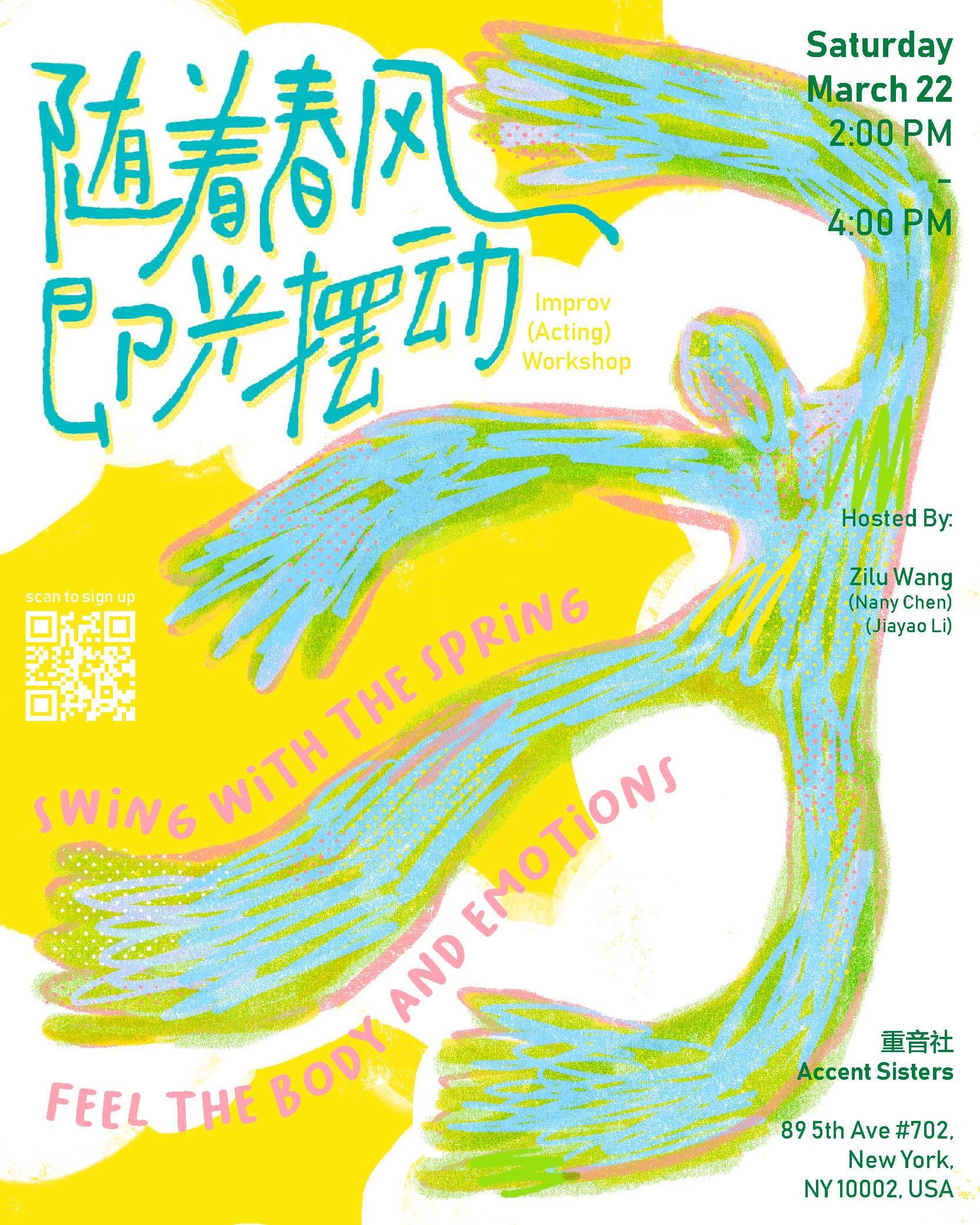
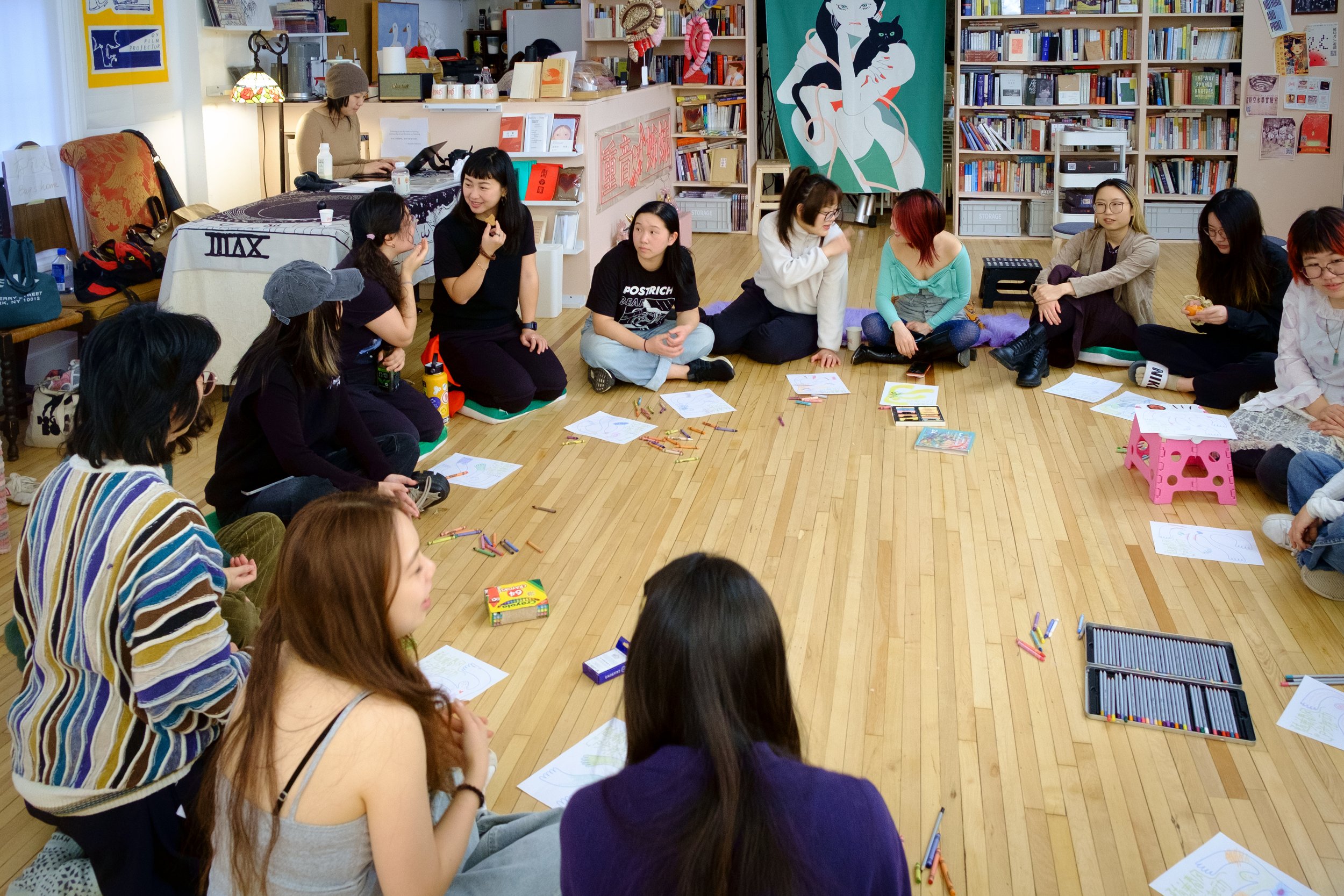

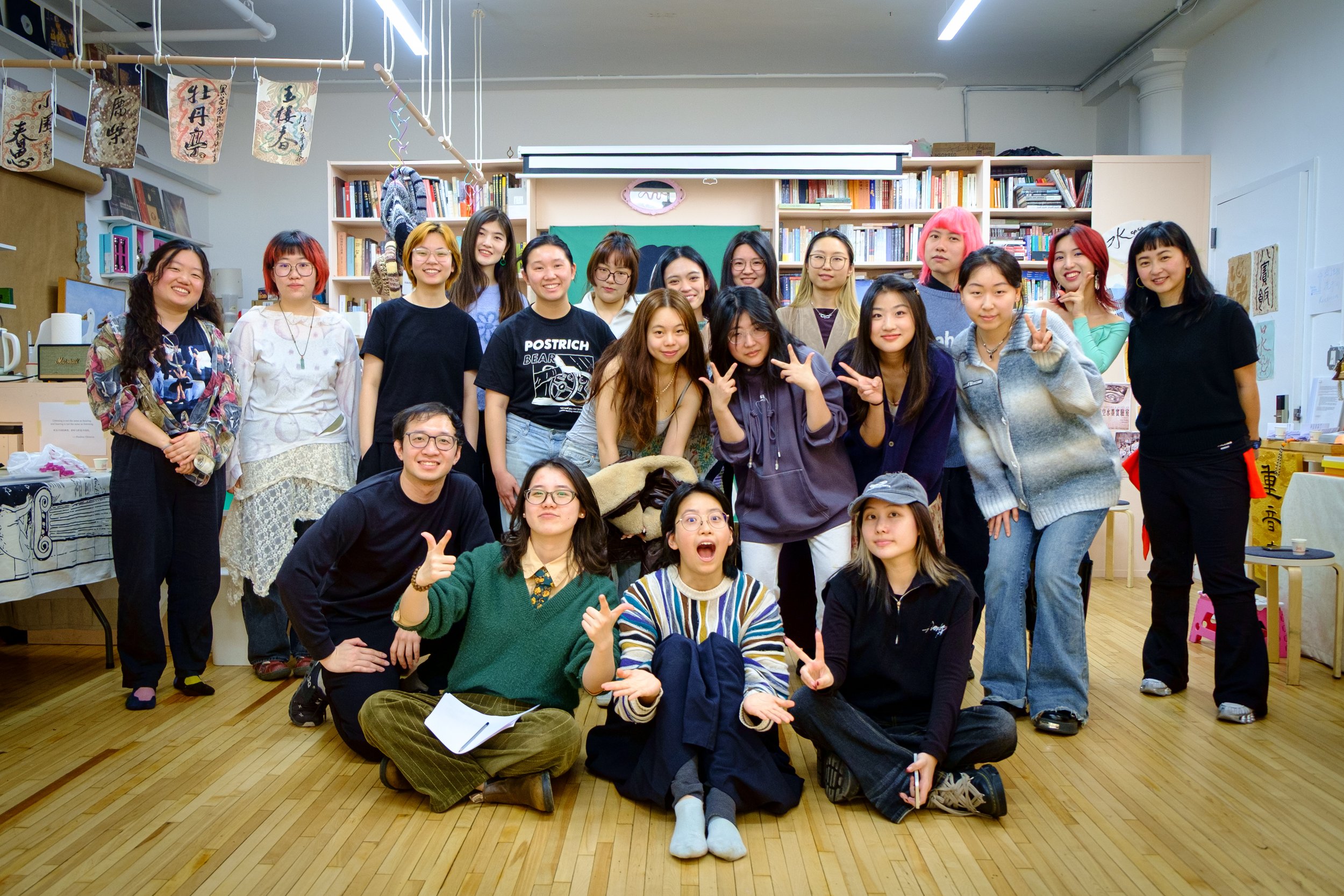
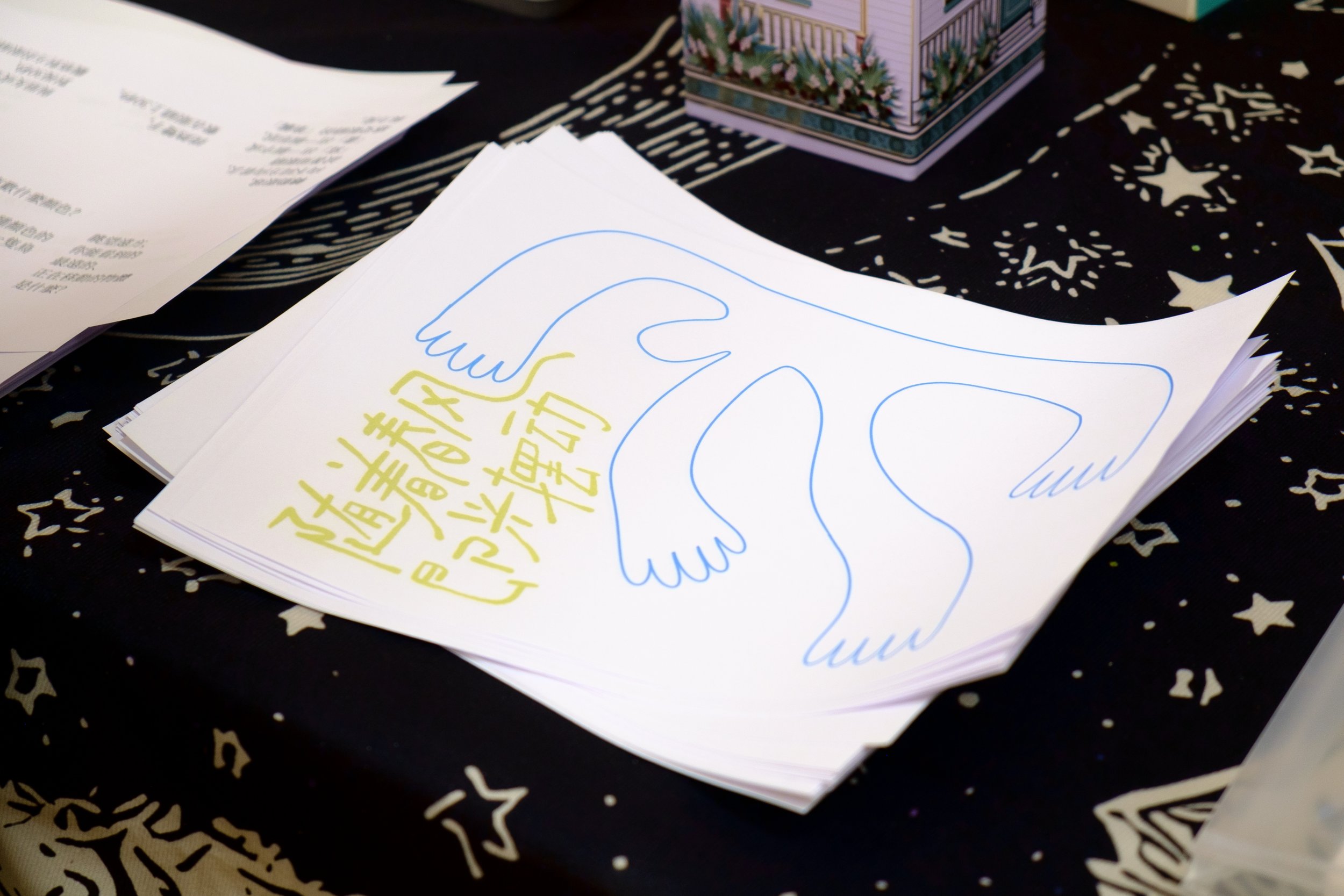


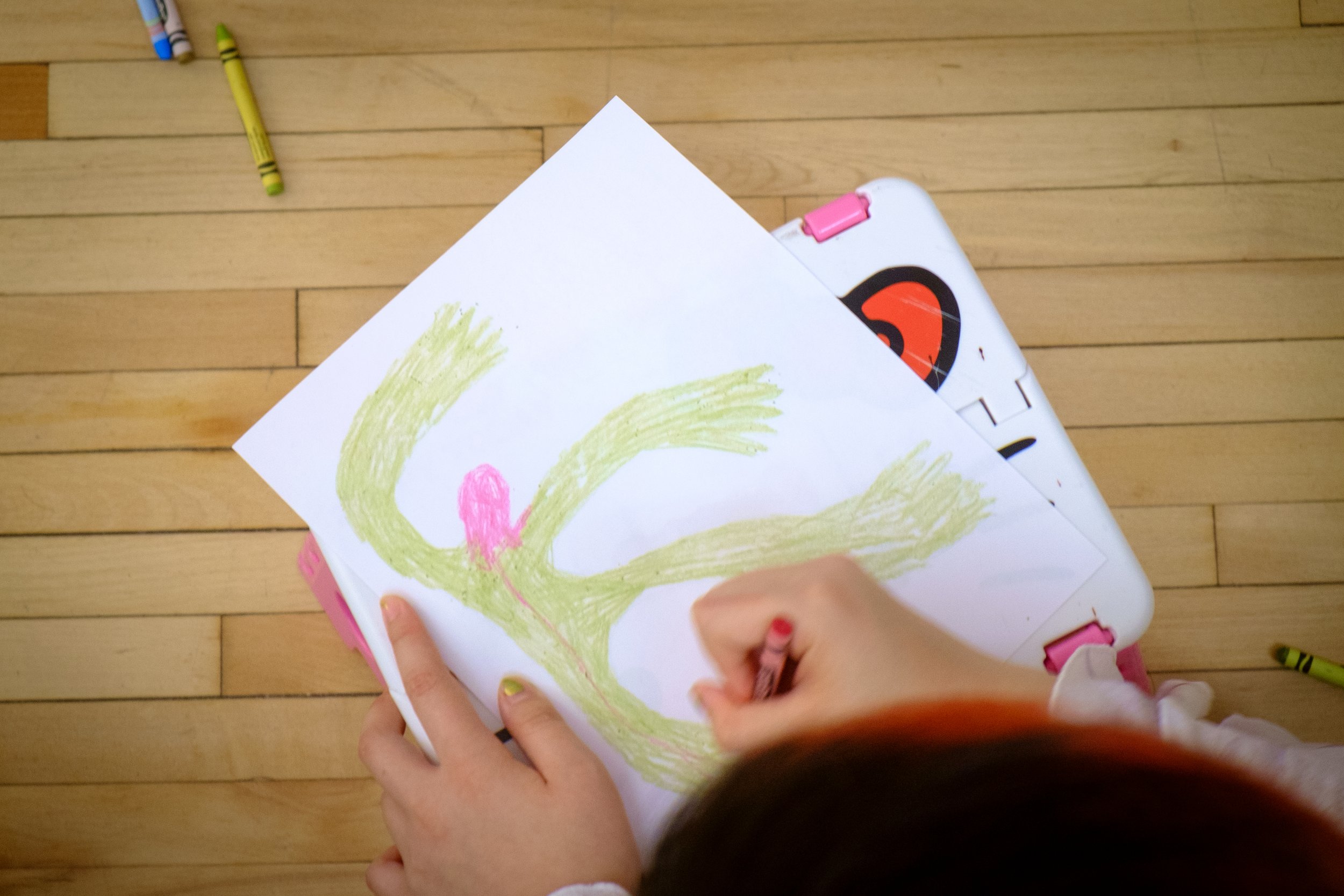
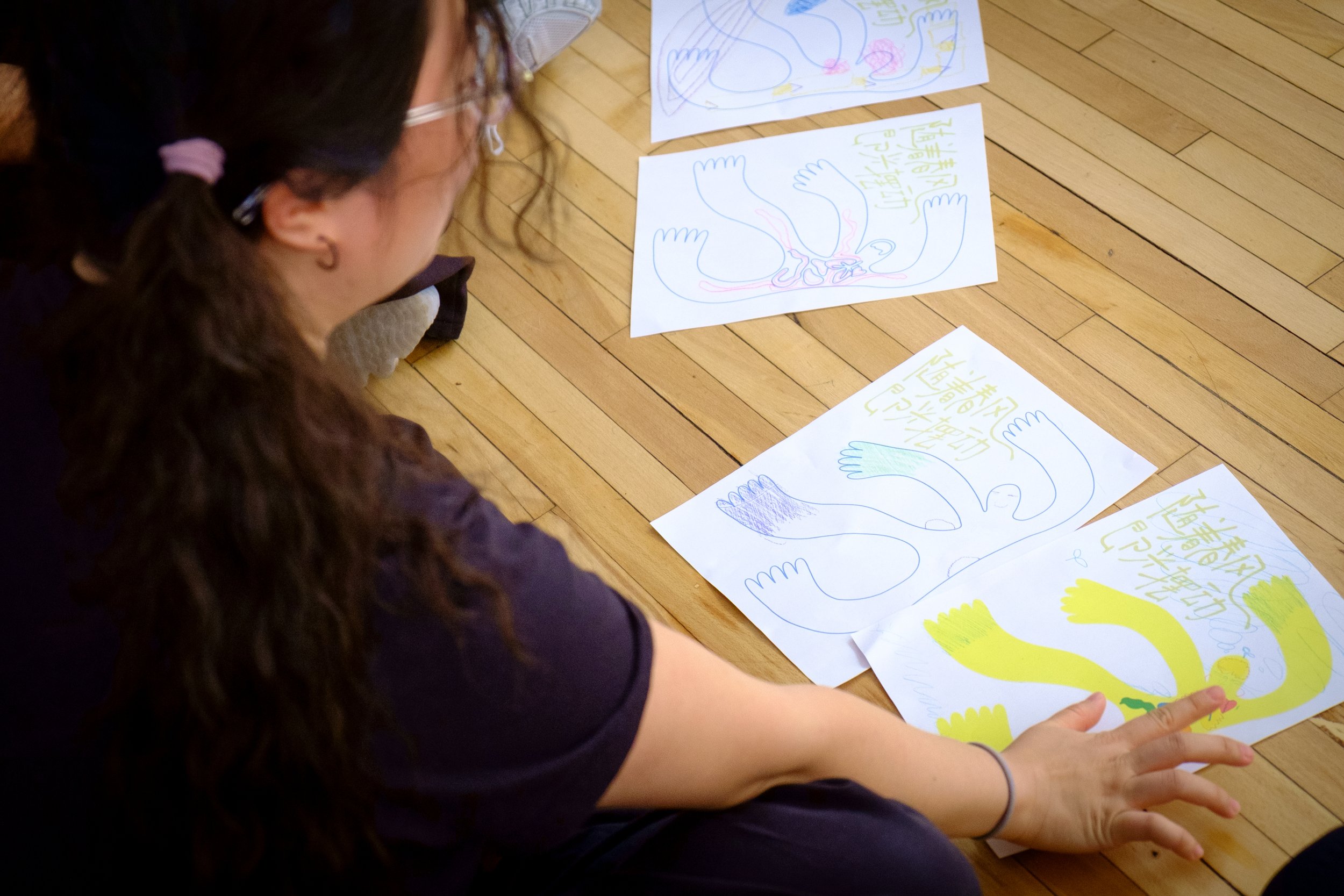
Intervention #2: Self-Care Pamphlet
Distributed after each workshop session, the Self-Care Pamphlet offers participants a tangible way to extend their emotional practice at home. Designed for one-time use, each foldable pamphlet includes:Two Mind-Body Maps for continued reflectionEducational content on emotional health and somatizationCulturally grounded self-care techniques (e.g., tea rituals, breathwork, calligraphy)Journal prompts and creative expression spacesAccessible resources for seeking professional support
Participants are encouraged to use the pamphlet in daily life to continue their personal care journey and track emotional progress. The foldable design allows for easy comparison of emotional changes over time, promoting self-awareness in a way that’s both visual and personal.Co-creation is the KEY!!!
Walked into the community not as an external expert, but as a part of the community, designing solutions for "All of Us" rather than "them."
Improved interview design and facilitation skills in leading workshops
Advanced data analysis using R Studio to evaluate survey insights from 200 participants.
Enhanced design strategies by adopting a system-thinking approach to address complex challenges holistically.
Developed a culturally relevant intervention framework grounded through co-creation.
